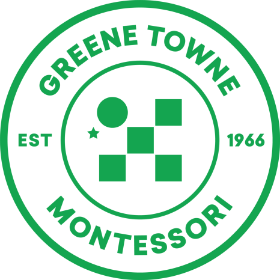Ms. Michelle: April 2023
“Everybody admits that a child must be constantly on the move. This need for movement, which is irresistible in childhood, apparently diminishes with the development of inhibiting forces at the time when these, by entering into a harmony with the motor impulses, create the means for subjecting them to the will. Thus the more developed a child is, […]
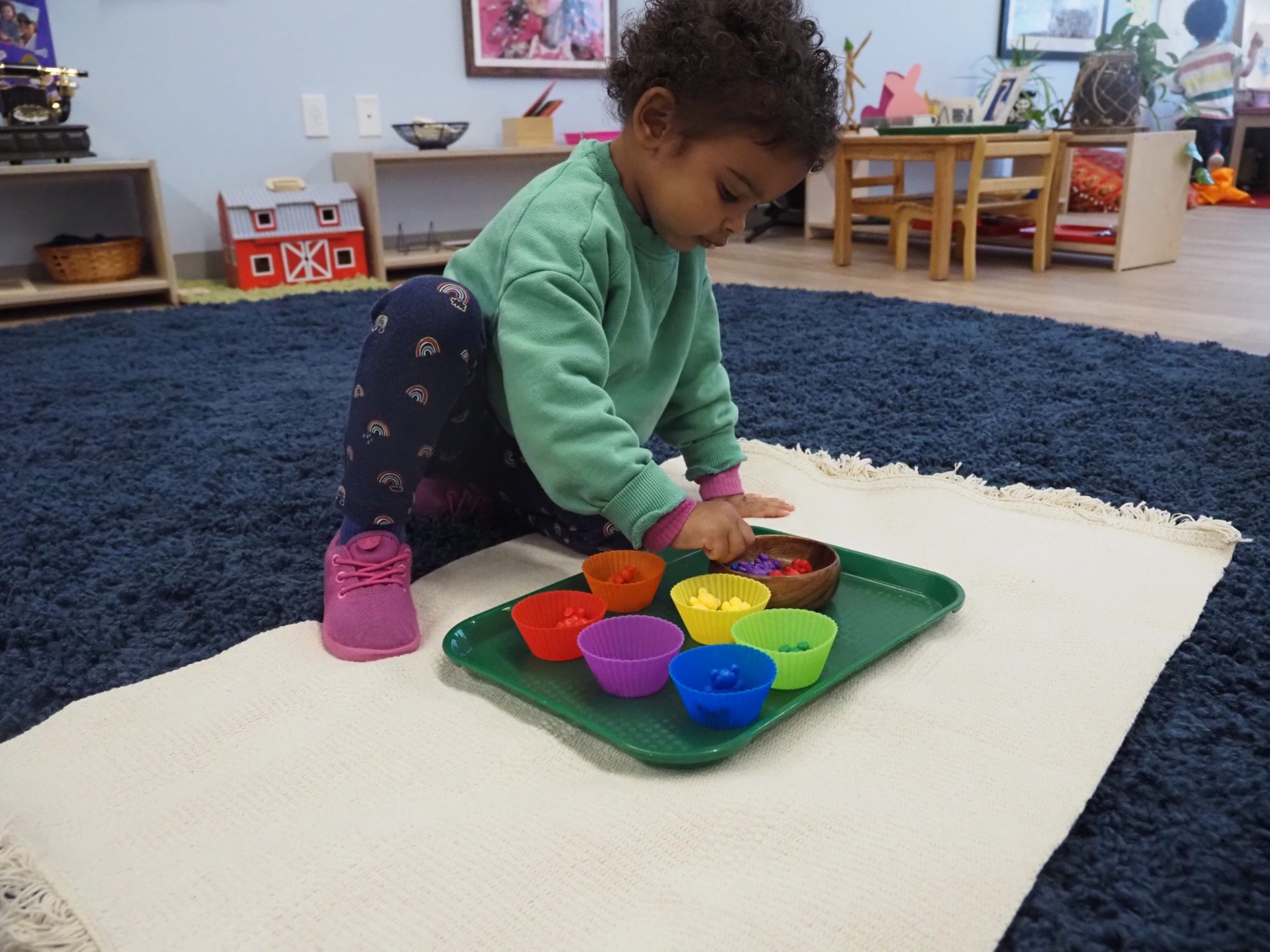
“Everybody admits that a child must be constantly on the move. This need for movement, which is irresistible in childhood, apparently diminishes with the development of inhibiting forces at the time when these, by entering into a harmony with the motor impulses, create the means for subjecting them to the will. Thus the more developed a child is, the more obedient are his instruments of motion of to his will, if he experiences the pressure of an outside will he can resist it. But movement always remains as the basis for a life of relationships, for it is precisely this capacity to move that distinguishes man and in fact the whole animal kingdom from the vegetable world. Movement is therefore an essential part of life, and education cannot be conceived as moderating, of what is worse, inhibiting it. Rather it should permit a child’s energies to develop normally and assists him to exert them more profitably.”
Maria Montessori, The Discovery of the Child
Movement In The Prepared Environment
Movement is a critical part of the Montessori pedagogy and is embedded within the curriculum. While observing the prepared environment, one would notice children freely walking around the room searching for work, carrying trays or baskets to and from shelves, navigating around furniture and work mats, bringing a chair to a different table, watering the plants, engaging with other children, etc. They are not stationary, nor do they need to wait for an adult to assist them.
The work within the environment is hands-on, and movement is necessary to achieve success, whether it is moving objects to match them together, cutting a banana with a fork and knife, tonging balls from one bowl to another, pouring water into a cup, gluing beans to form a sound, or tracing the sandpaper numbers. Maria Montessori said, What the hand does, the mind remembers.” Repeated use of the materials means repetition of specific movements, which leads to mastery of a skill. When a child uses a scrub brush for the first time, it is an exploratory and sensory experience. Their actions at first may be jittery and frantic. Moving the scrub brush, watching bubbles form on the table, and feeling the water are of great interest to the child, and some children might smack the water to create a splash. As the child repeats the activity, their palmar grasp grows firmer, their arm motions become more controlled, and their aim becomes more precise. Instead of splashes of water everywhere, the child can scrub a blotch of paint off a table and then dry it. The once exploratory activity is now a practical tool!
Take a look at some of the materials the children use that require their motor skills. Notice their hands and how they hold utensils, how their bodies are being held up or twisted to achieve a goal, if they are standing or sitting, etc.
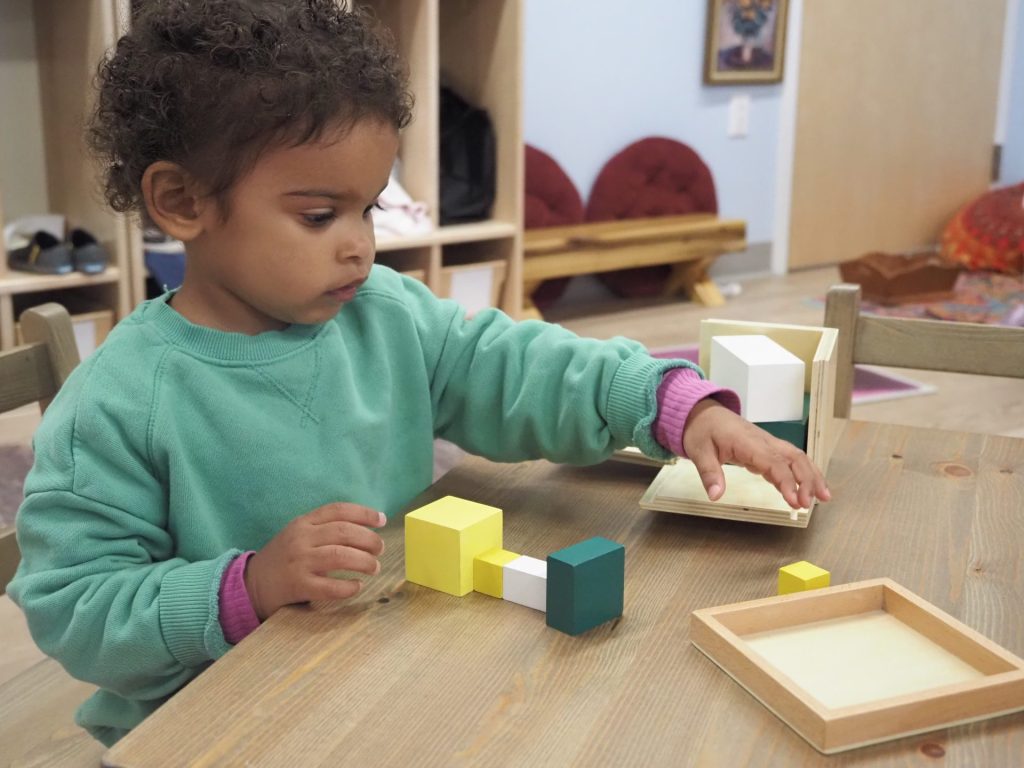
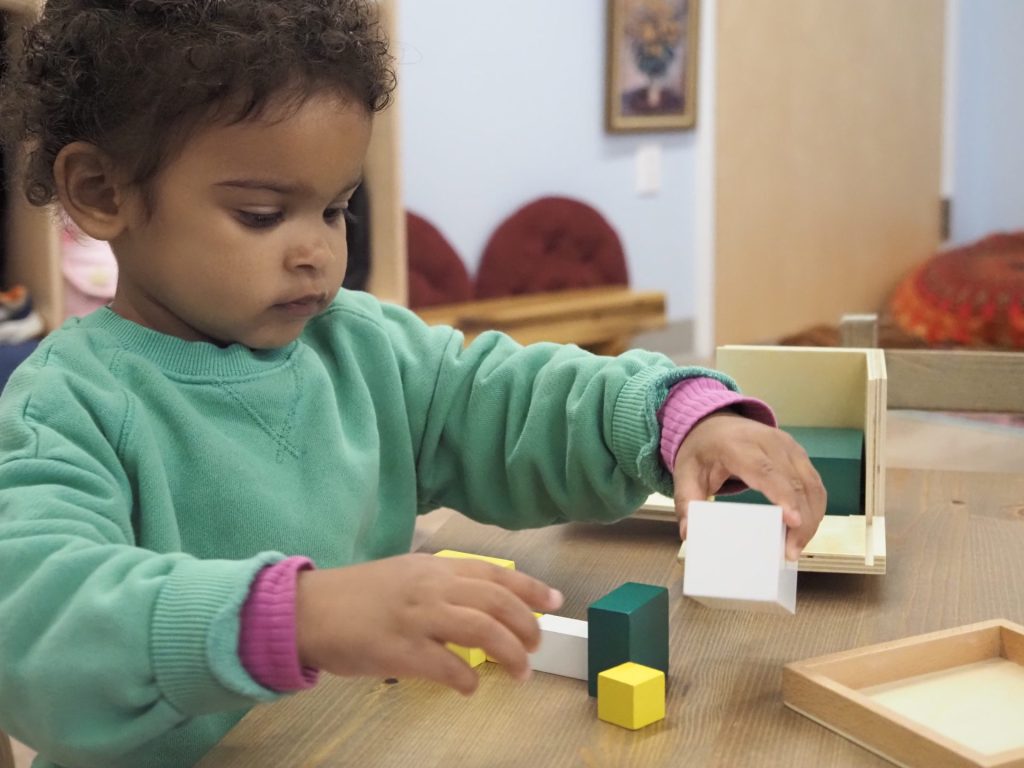
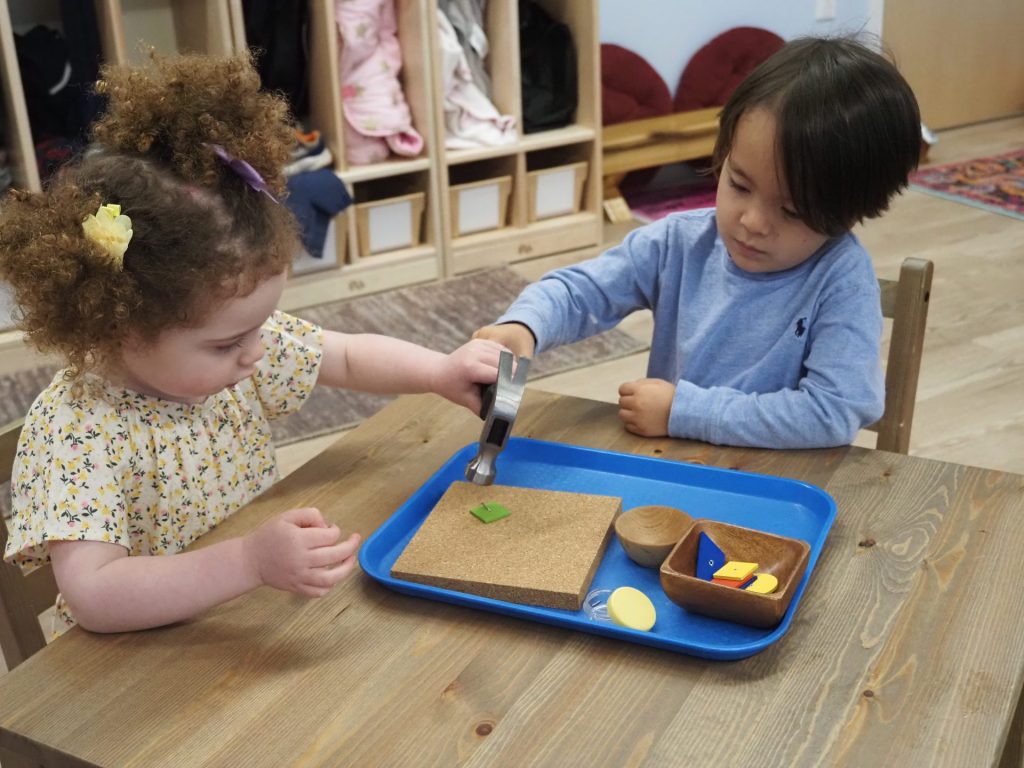
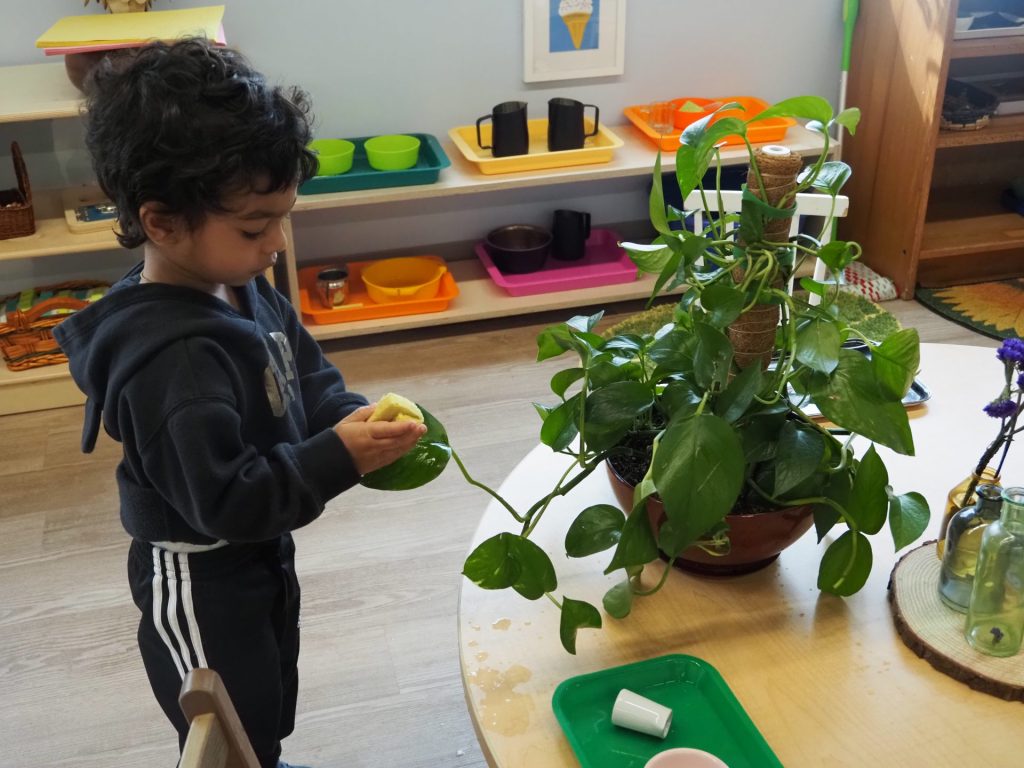


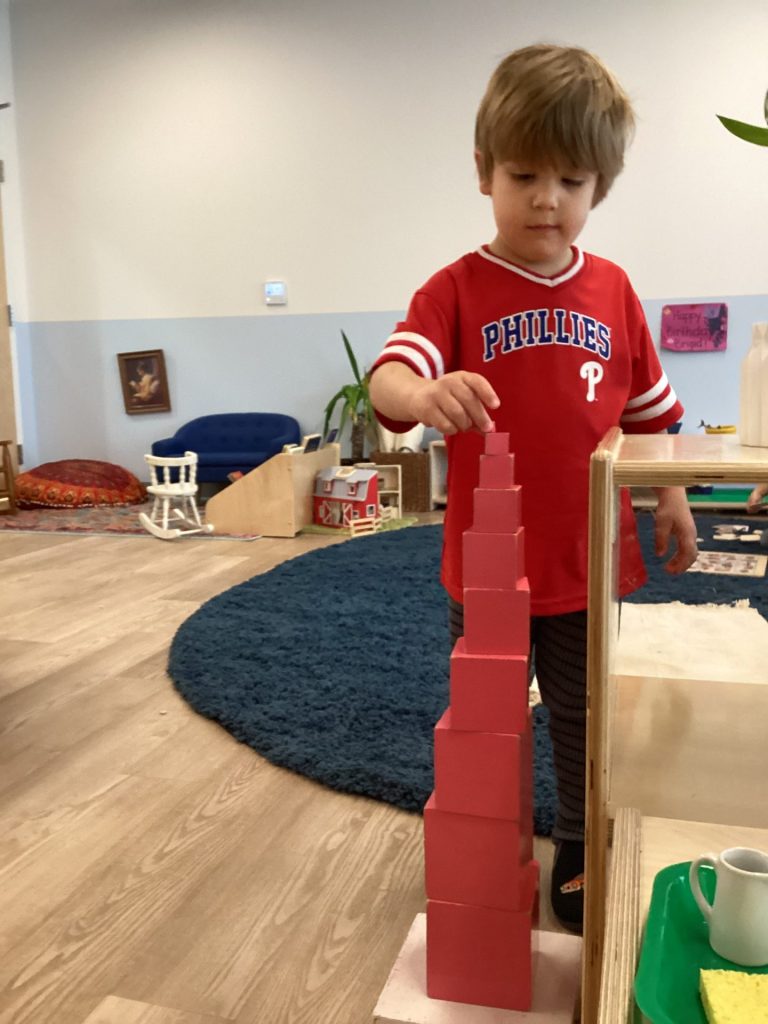
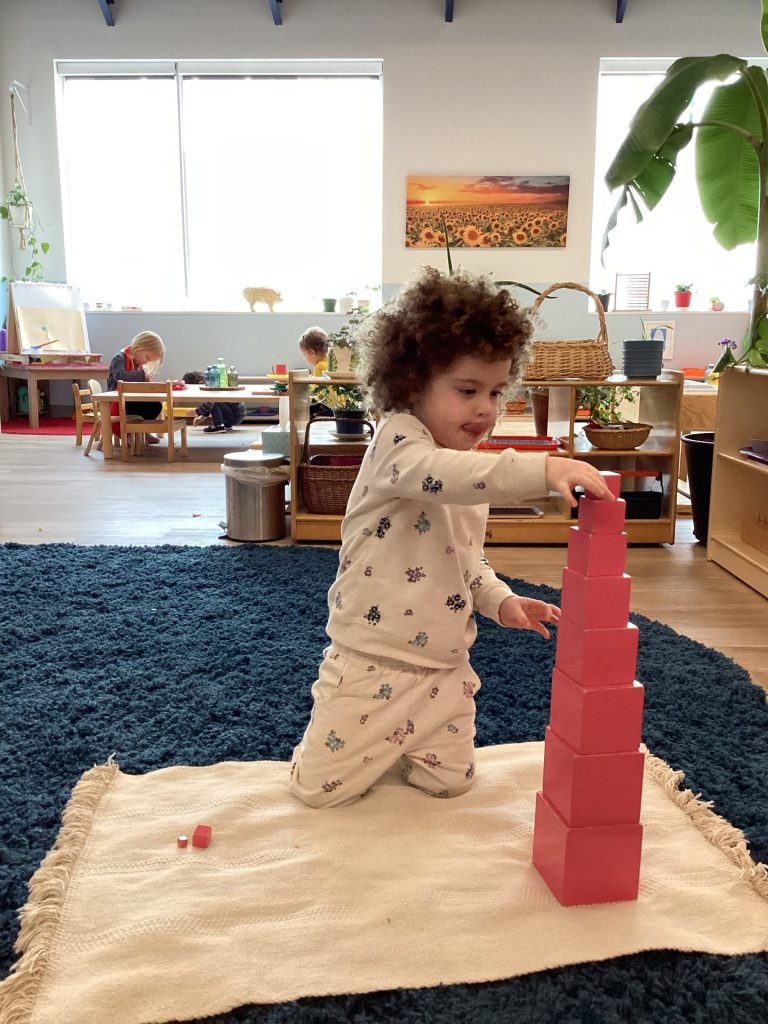
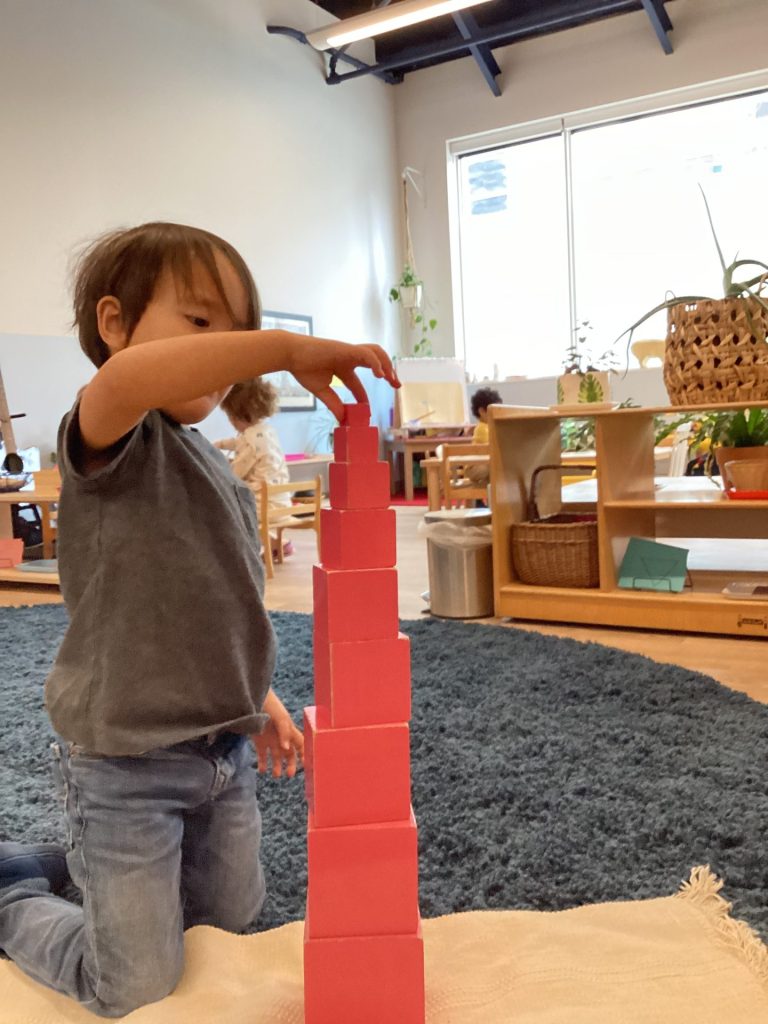
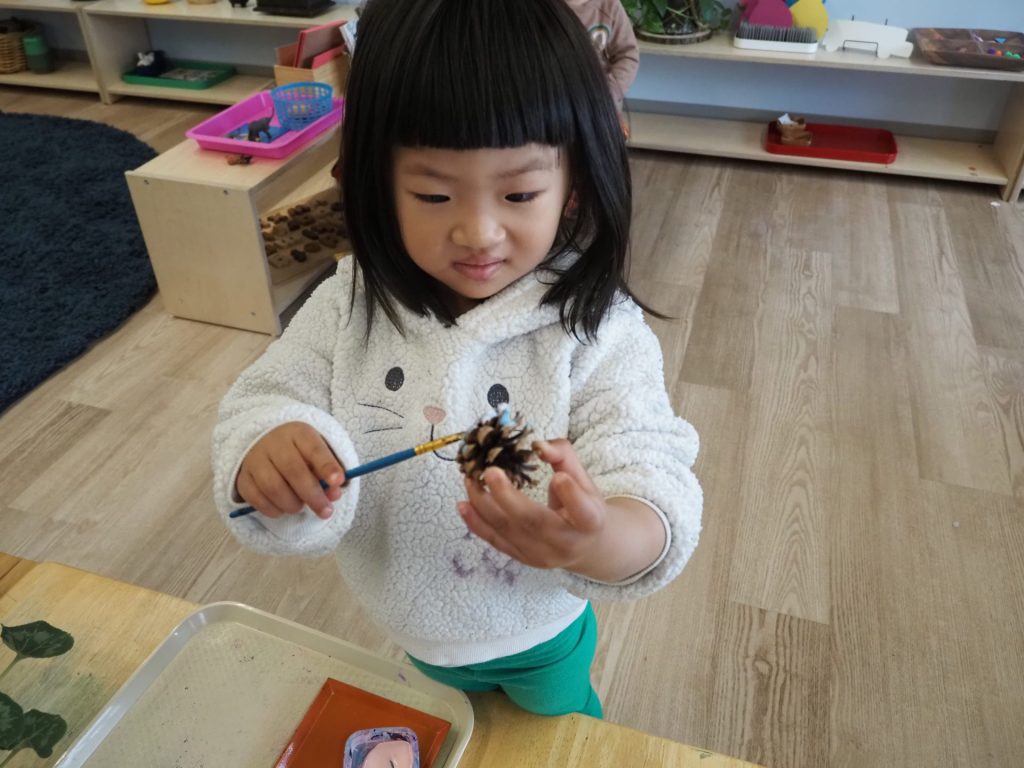
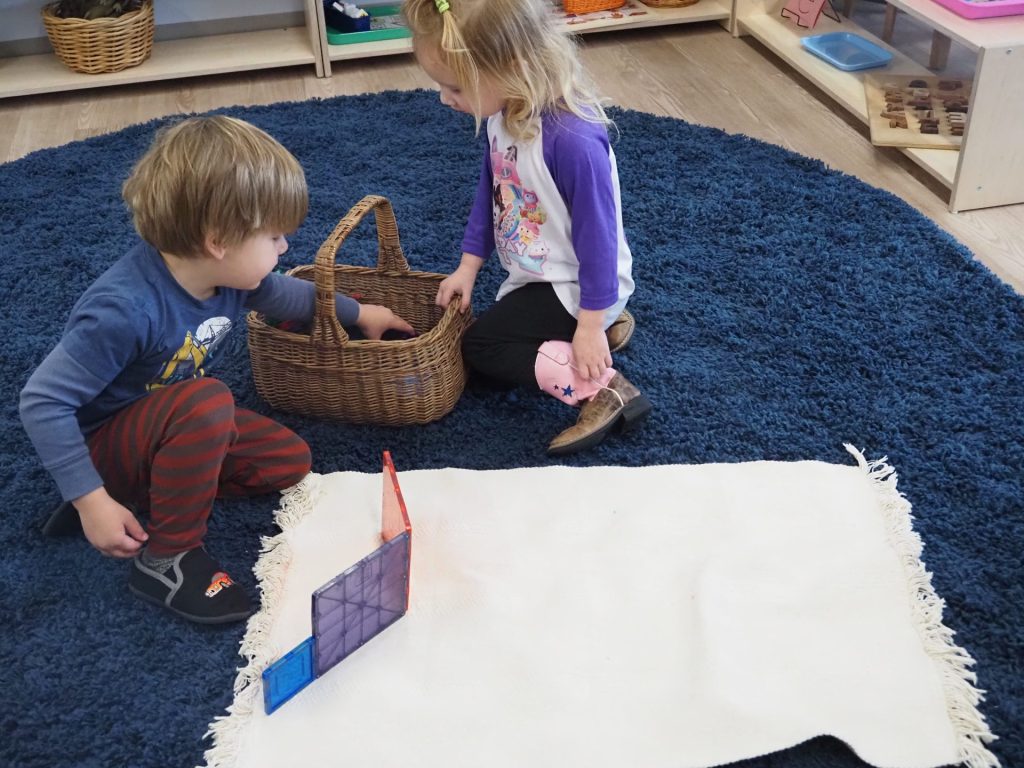

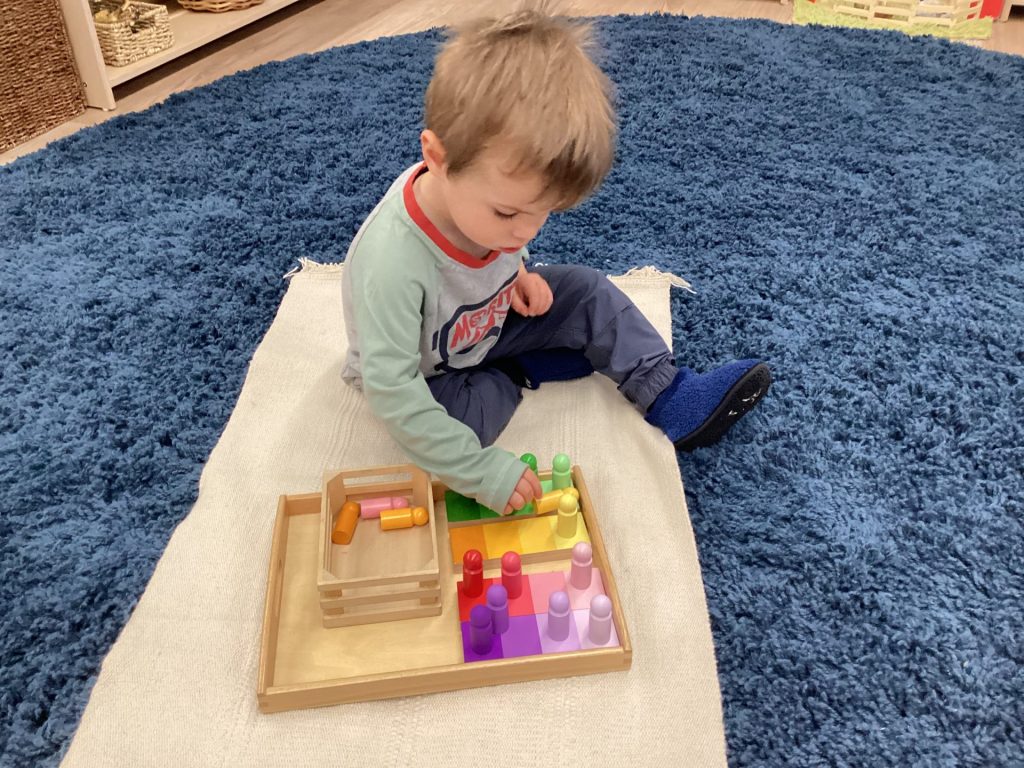
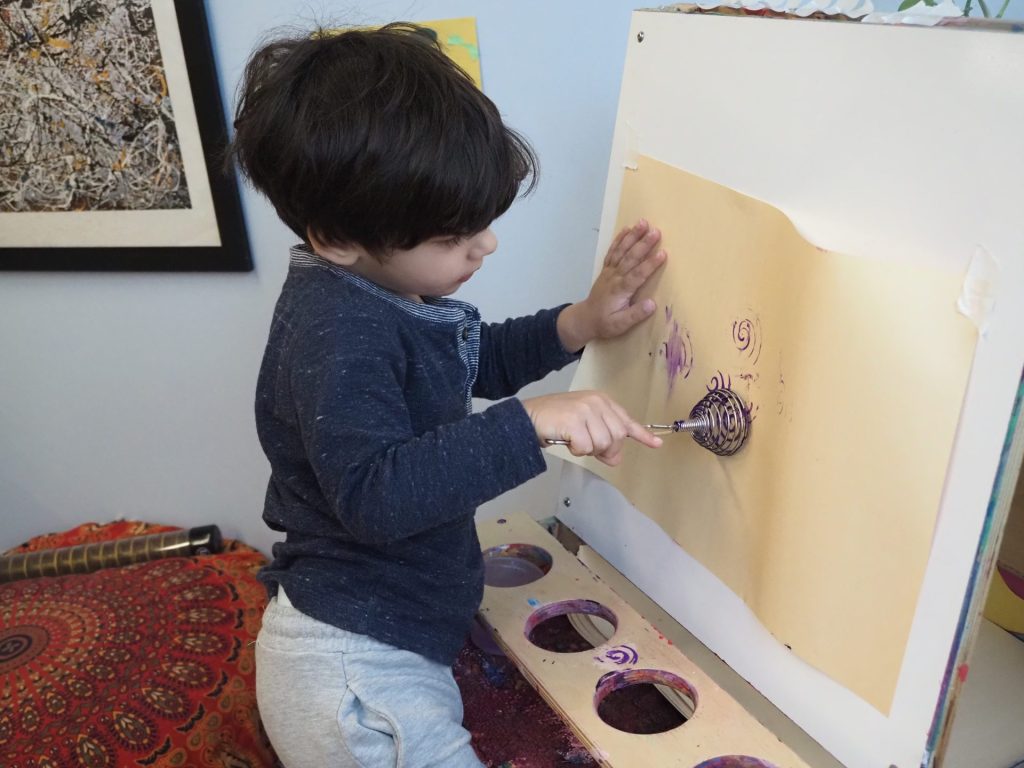


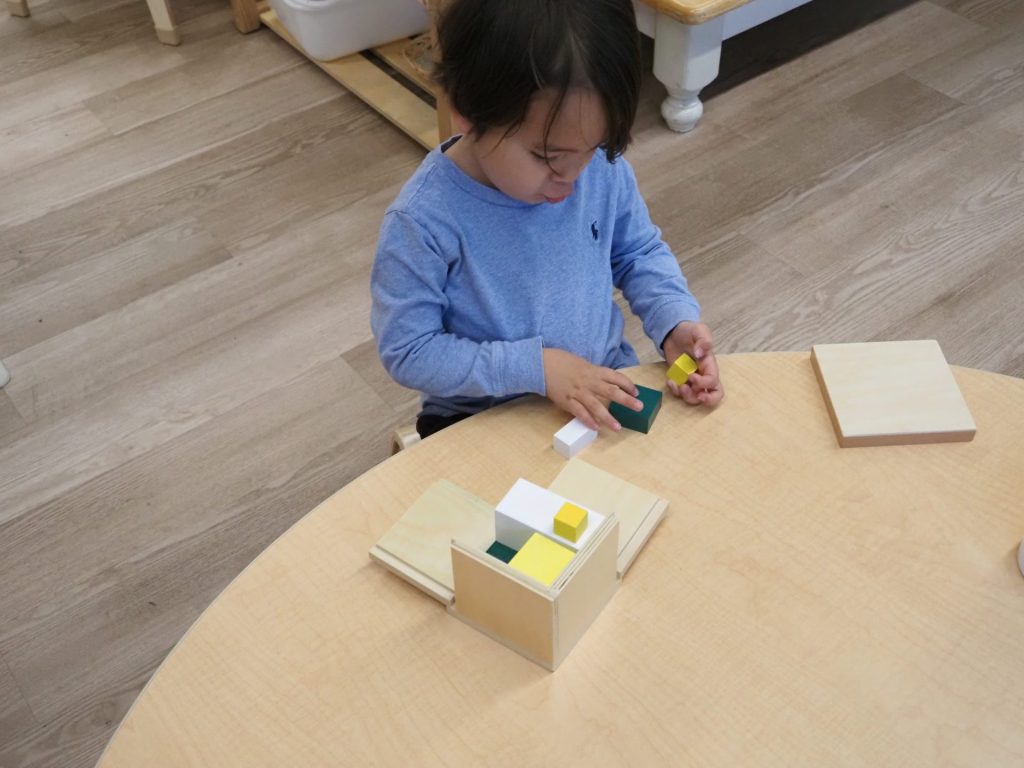
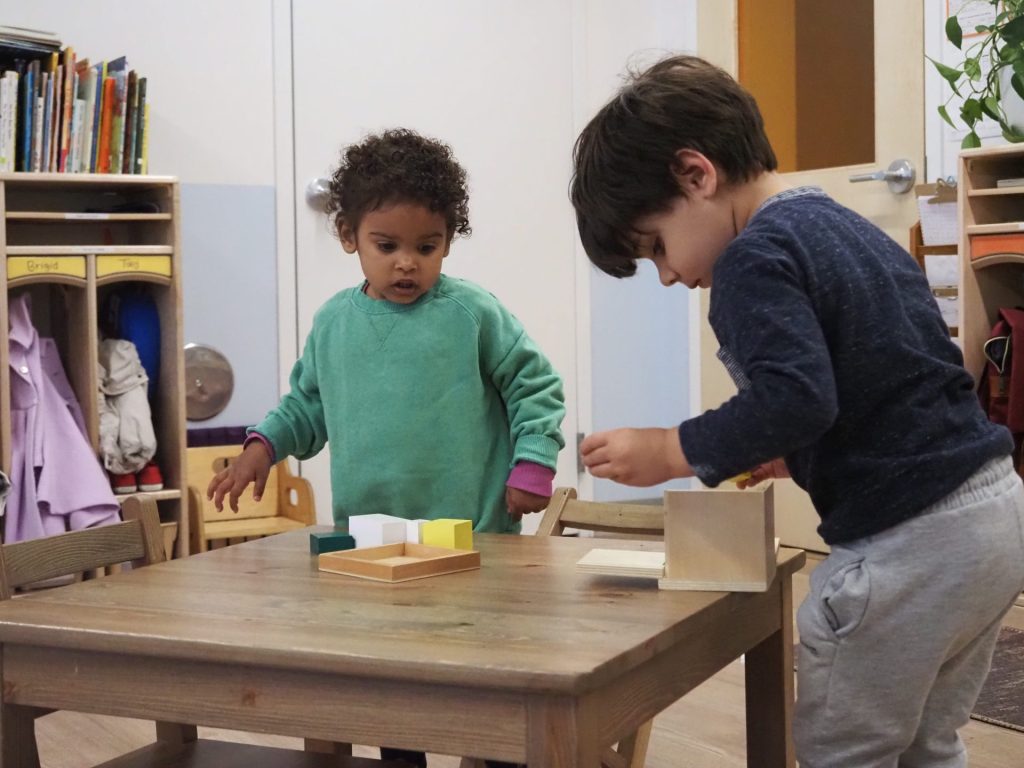
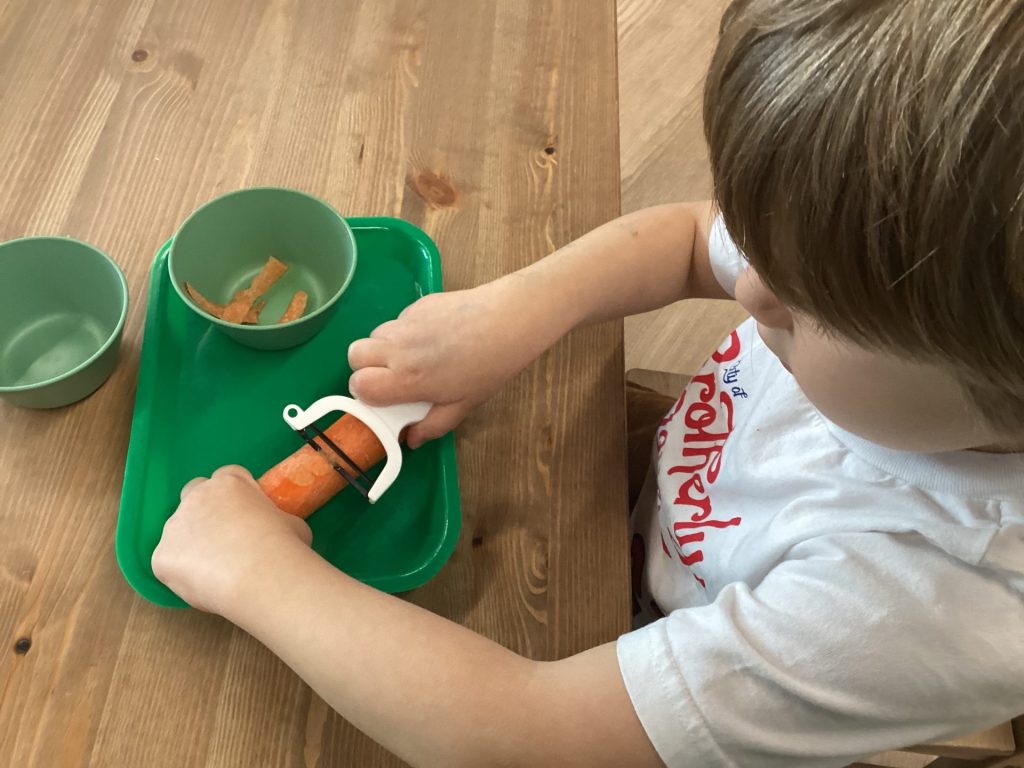

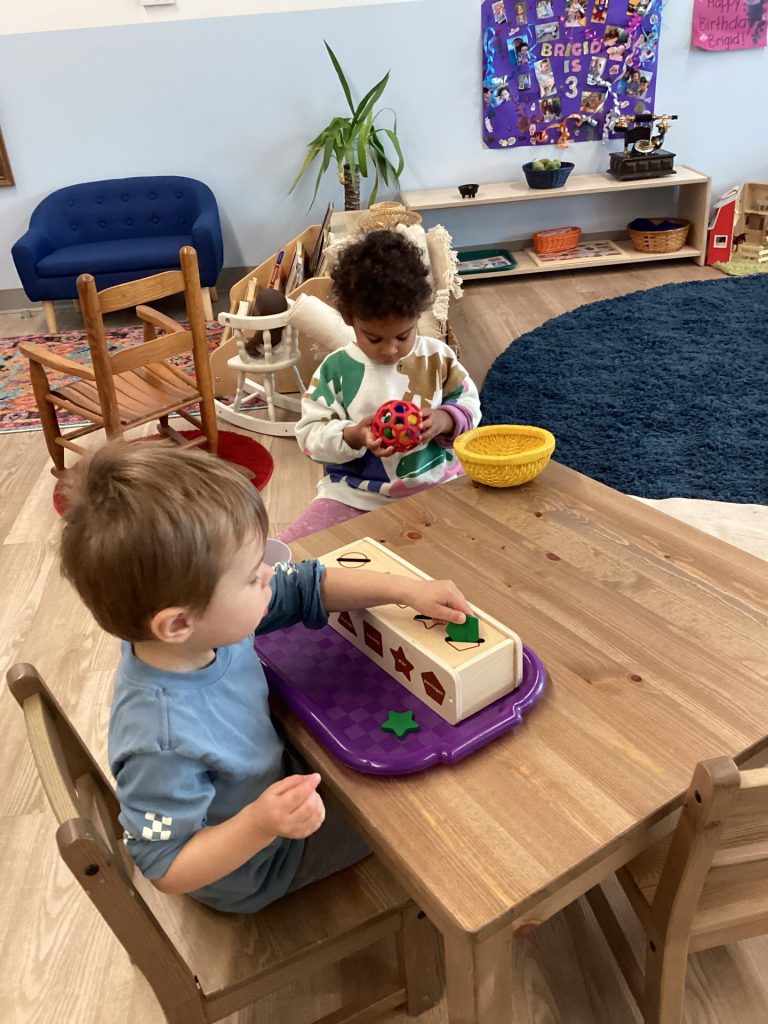
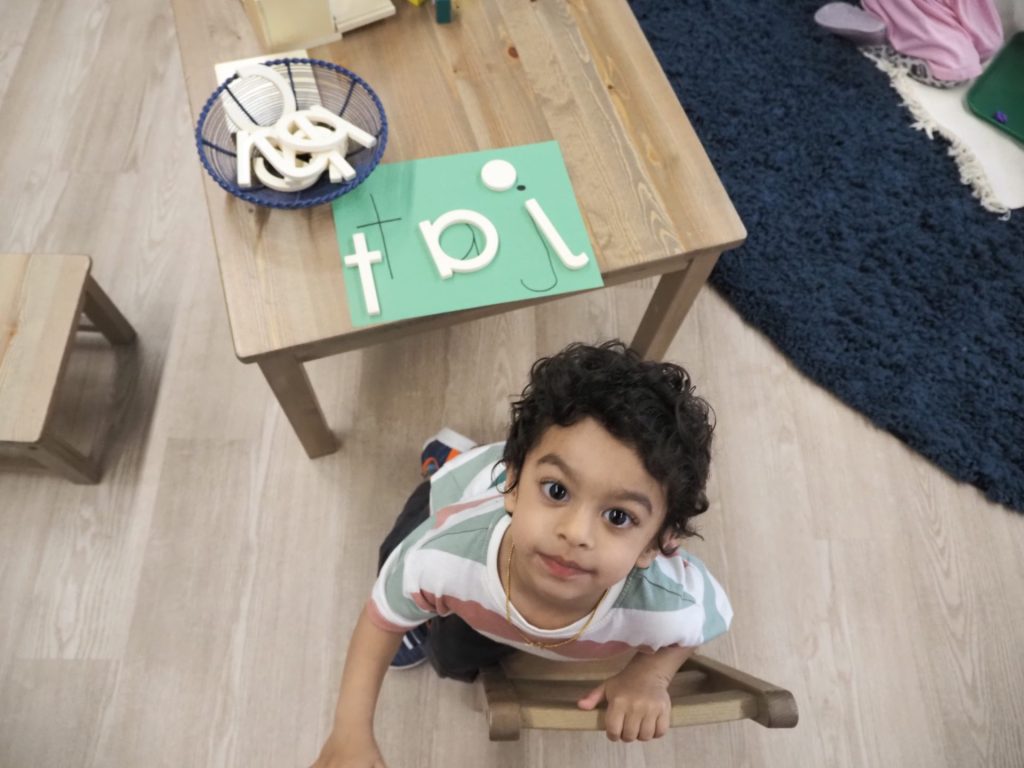
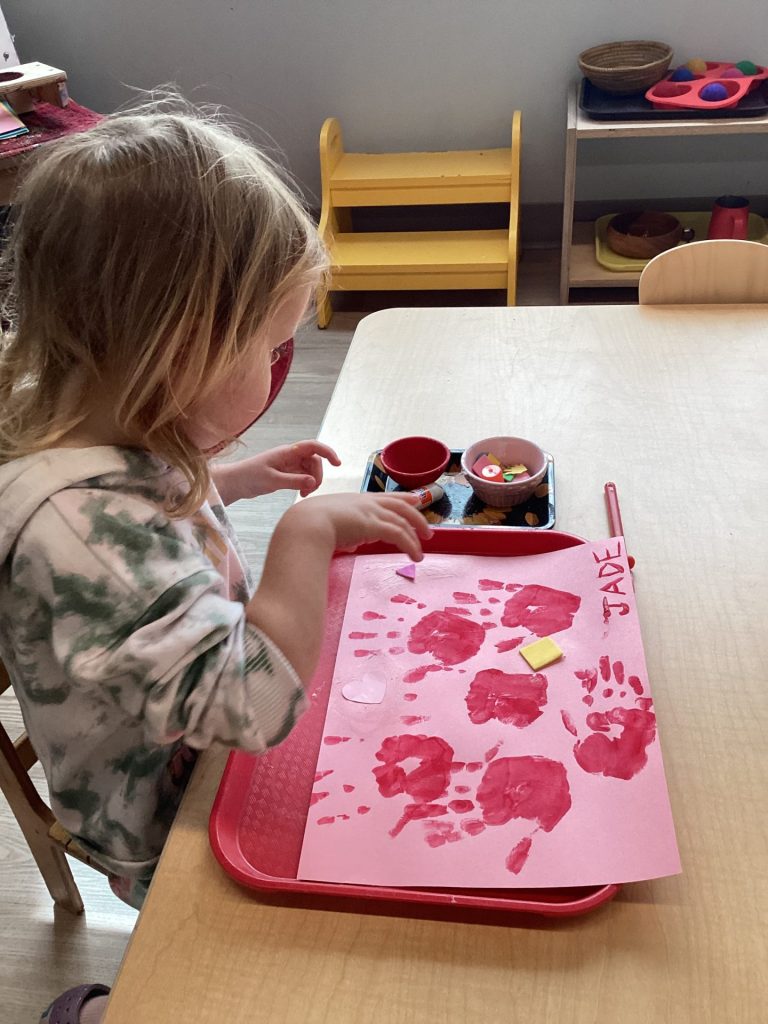
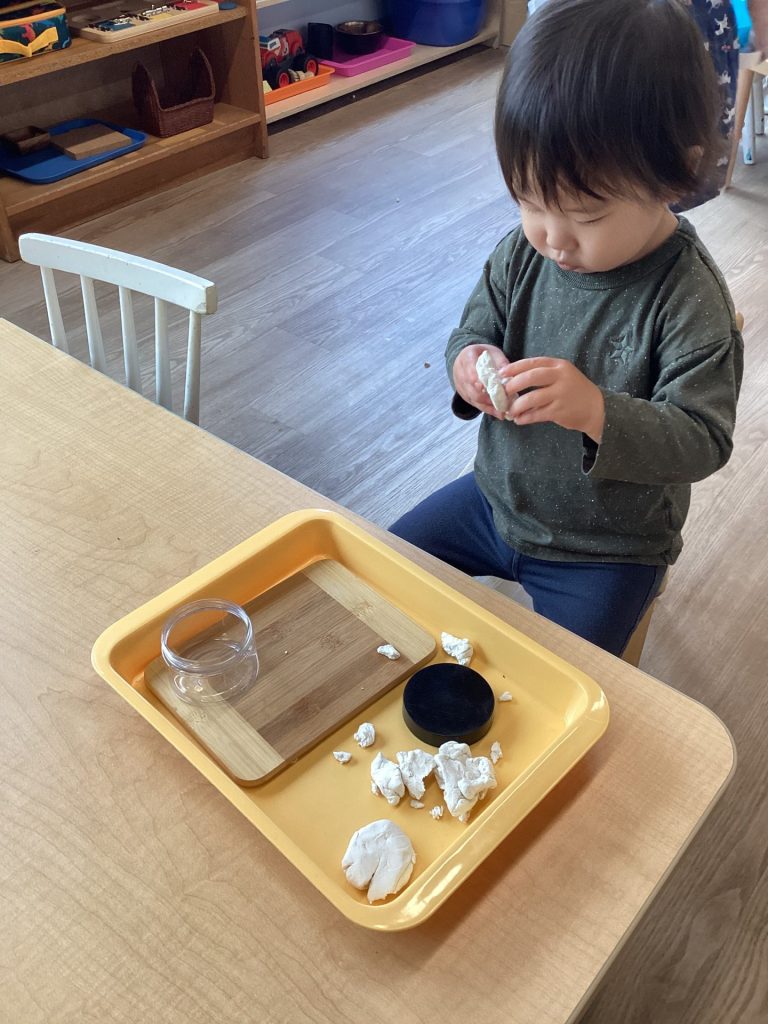

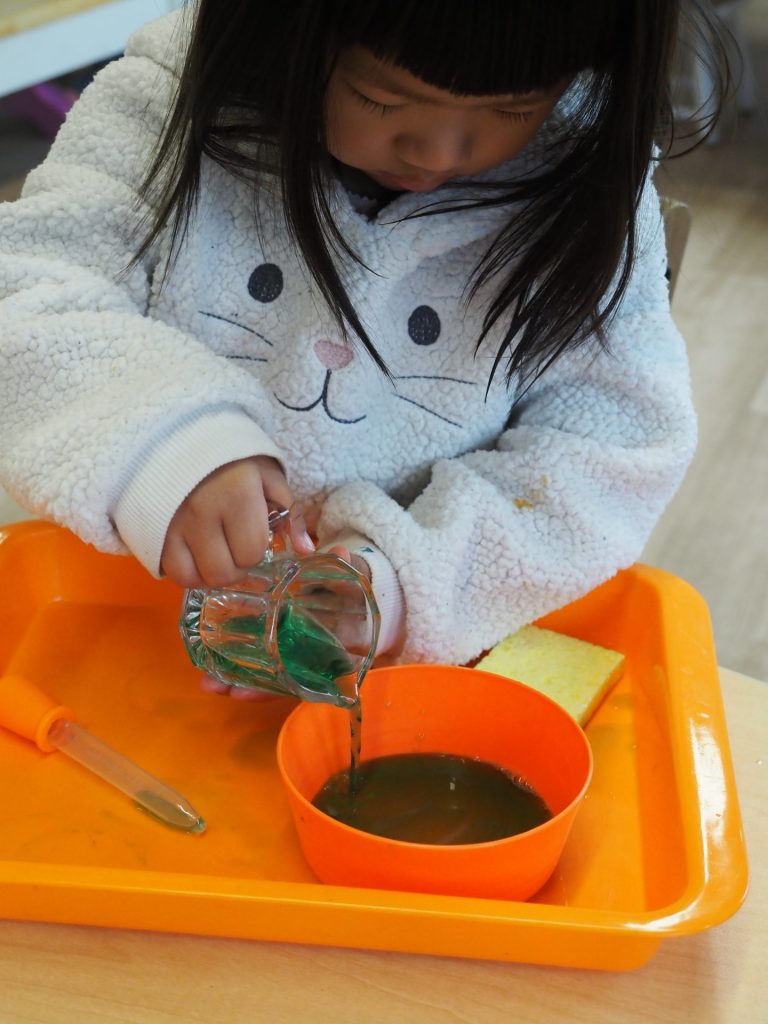

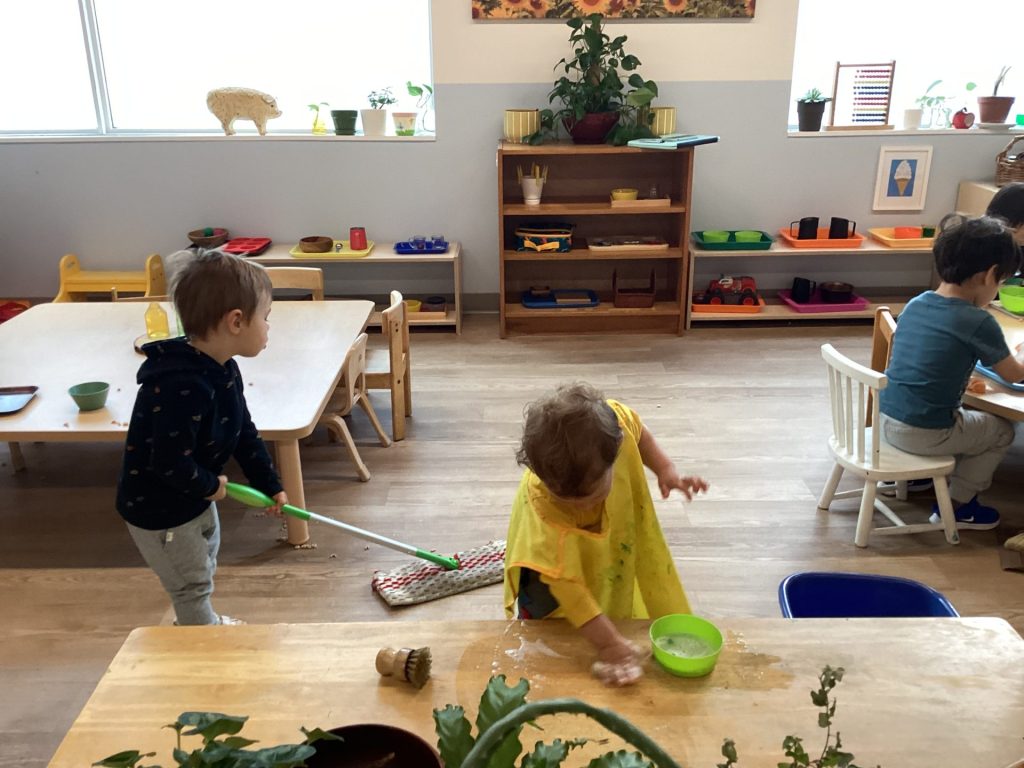
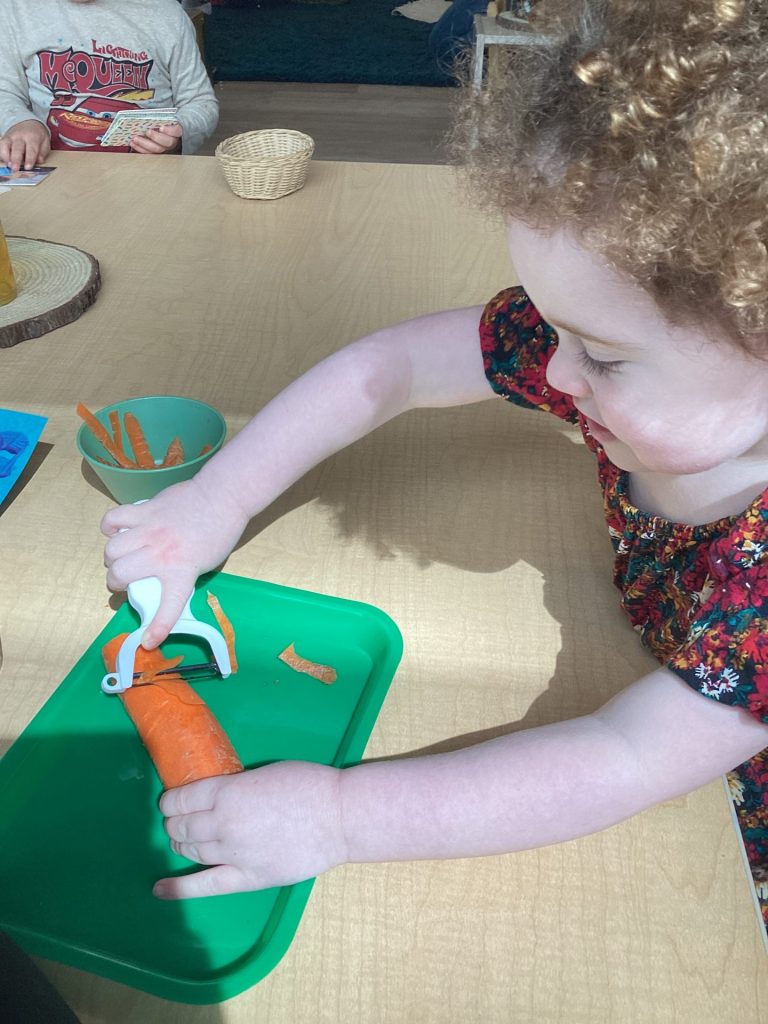
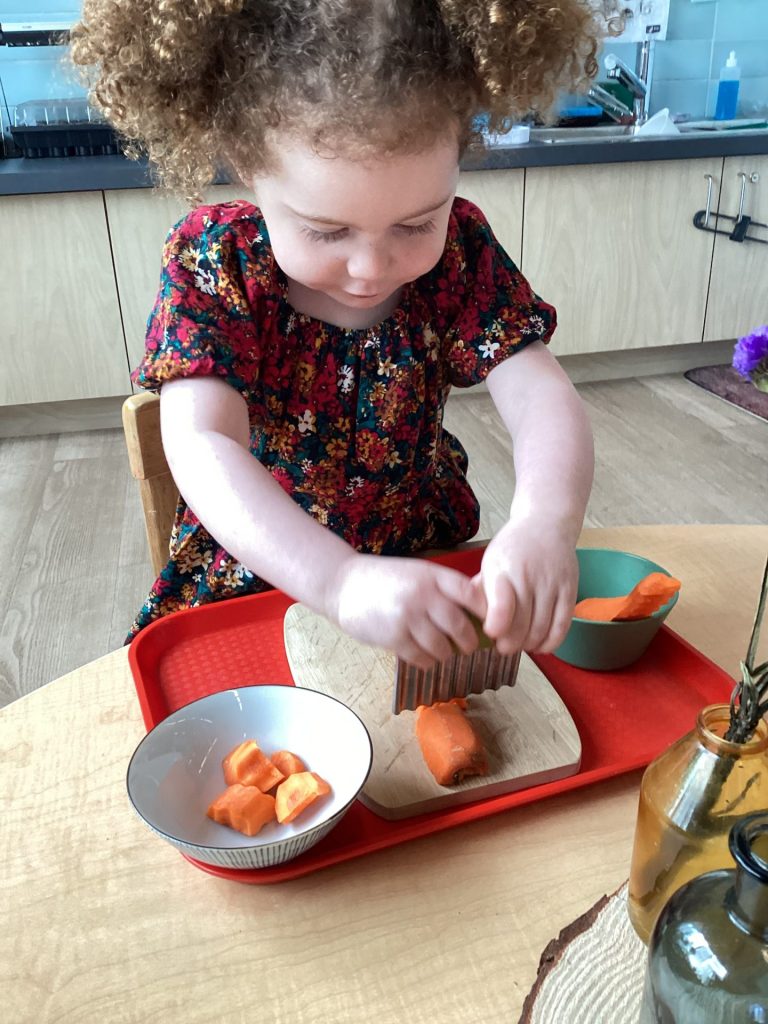


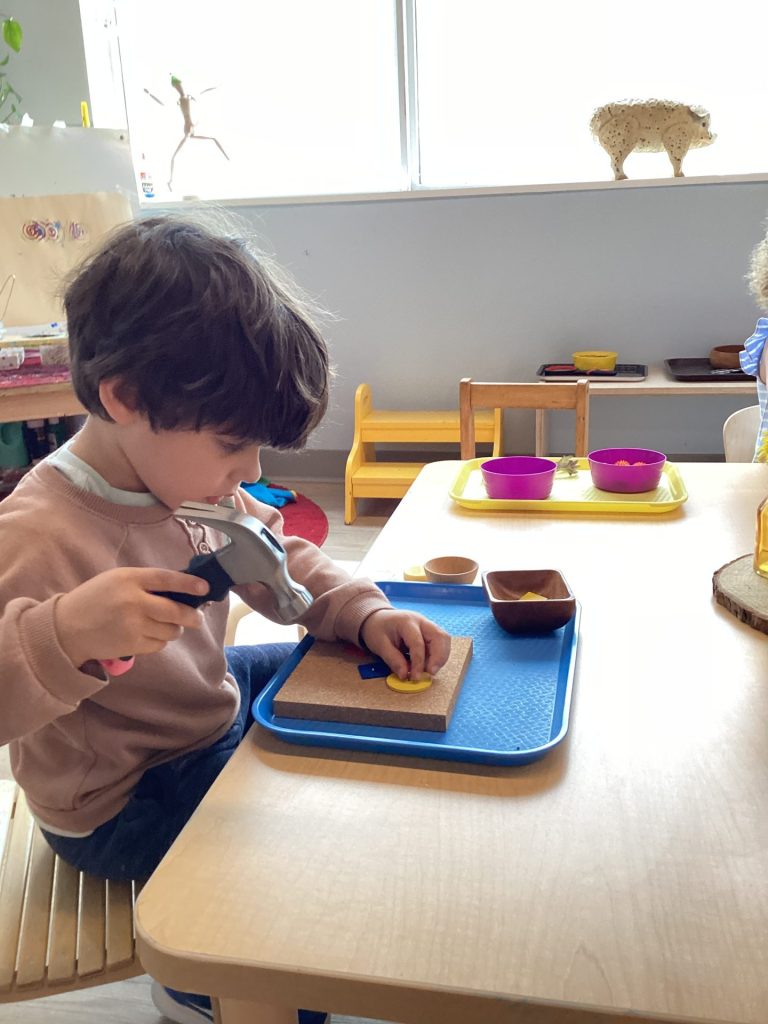

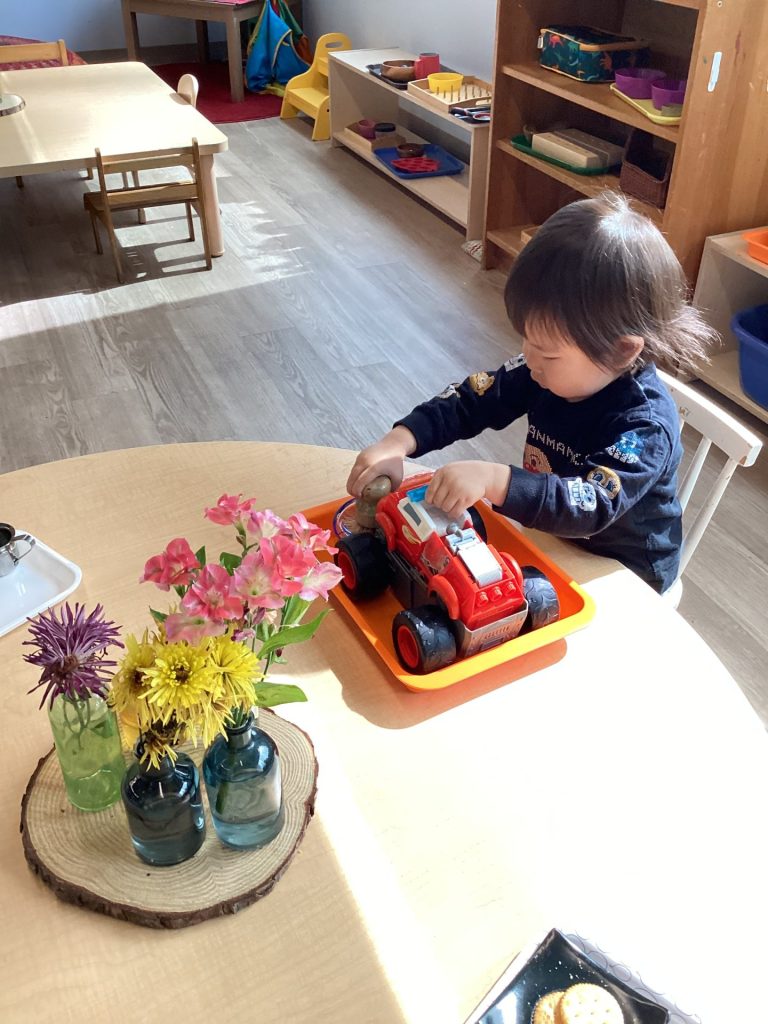
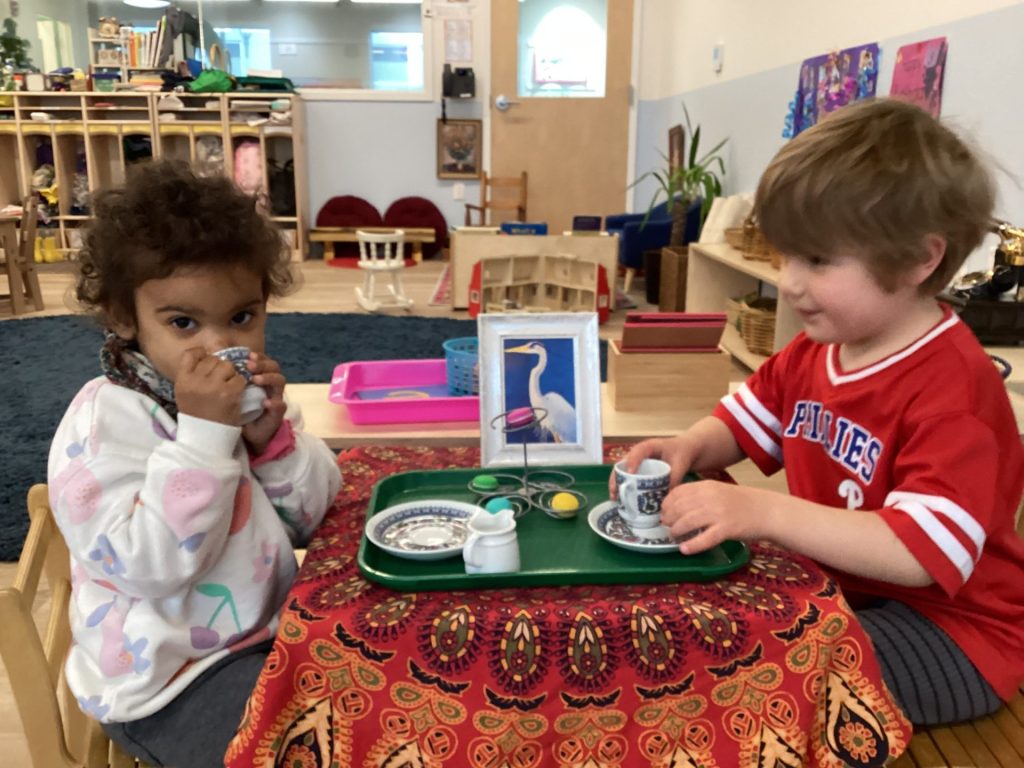
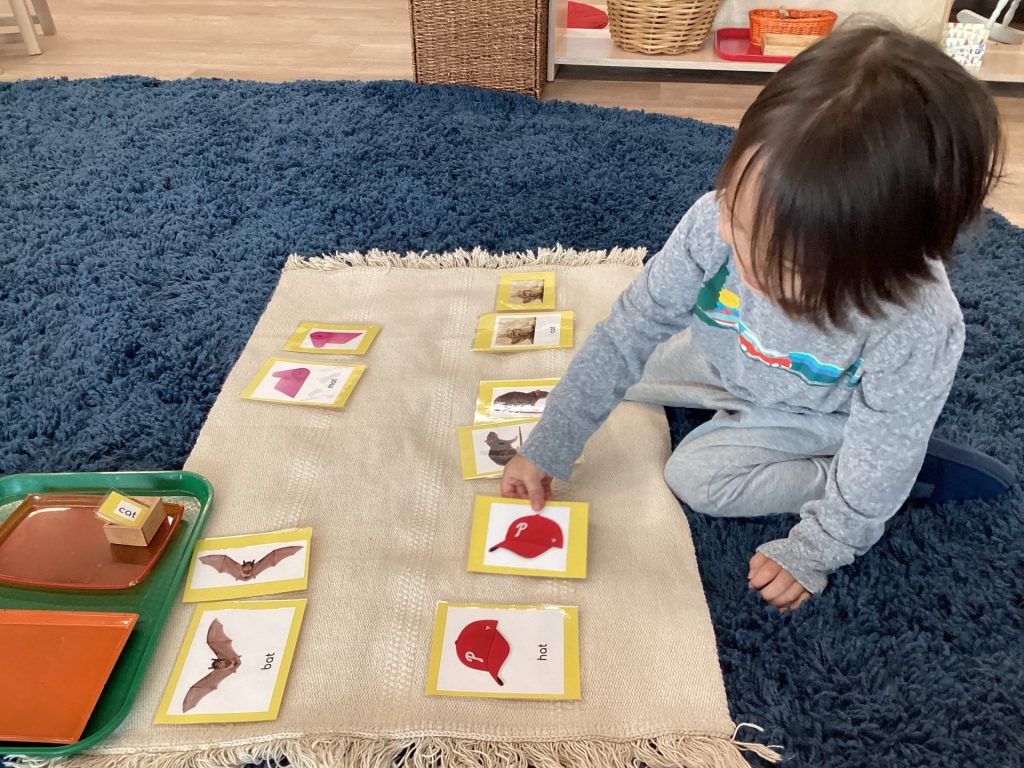
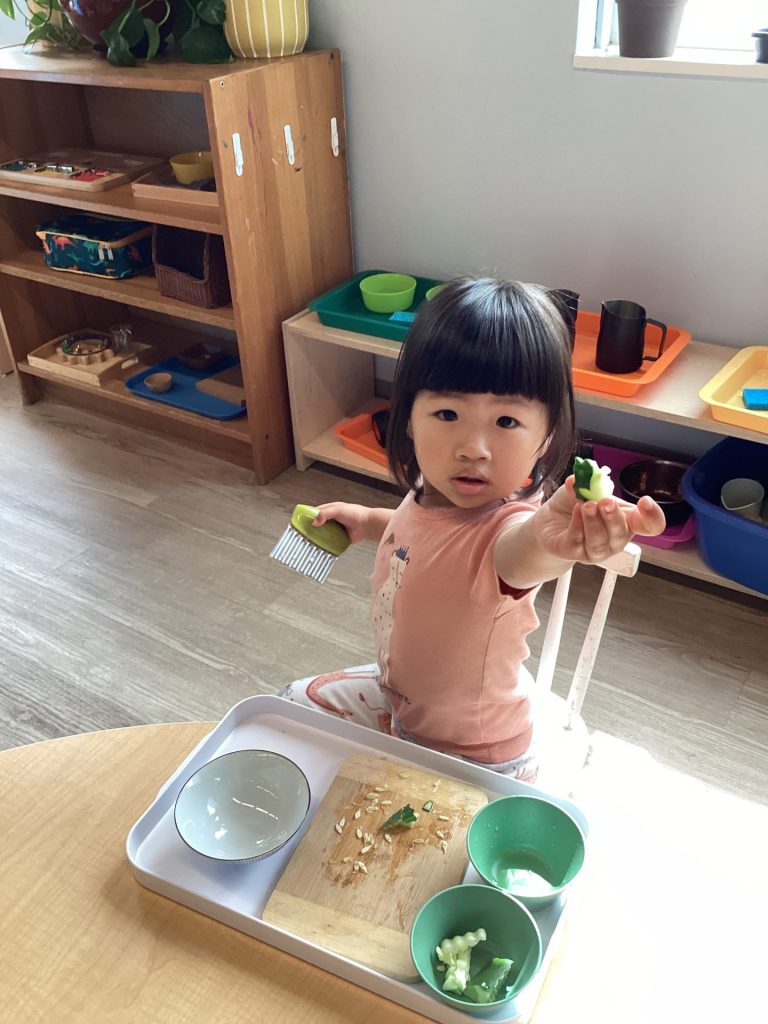
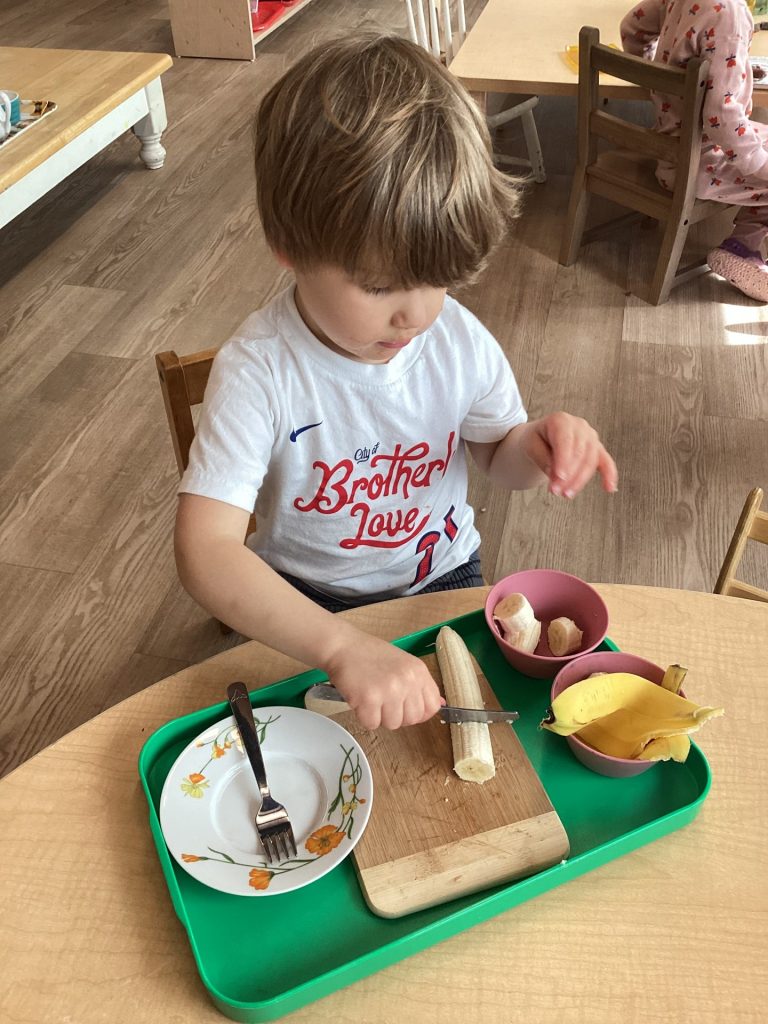
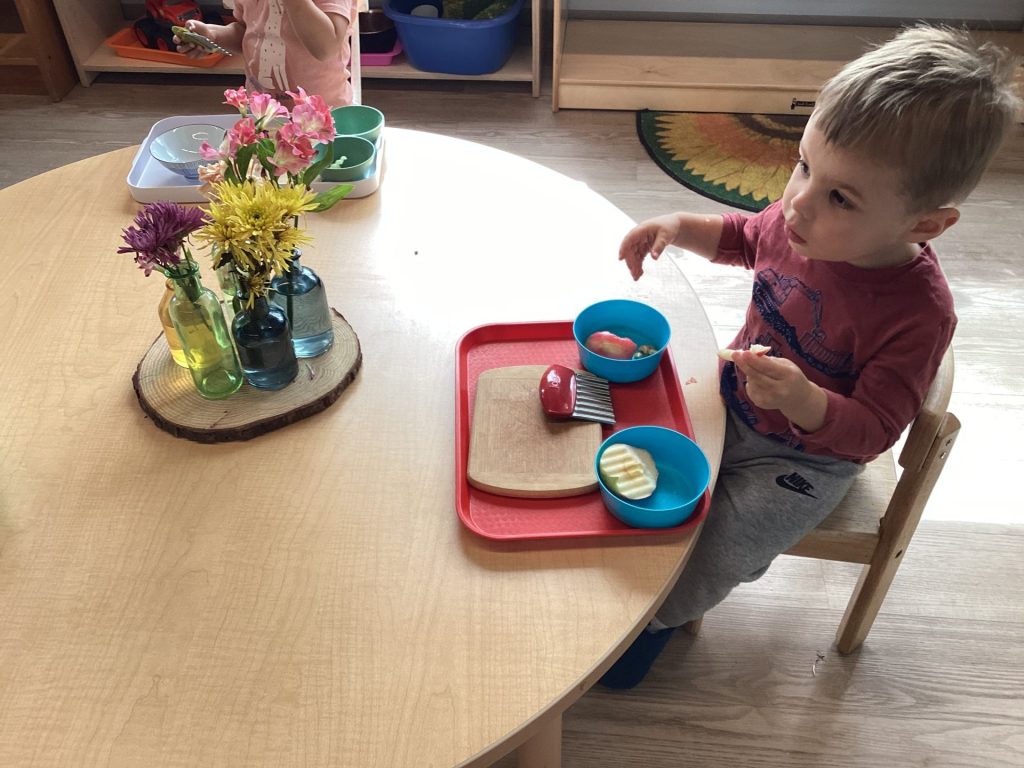

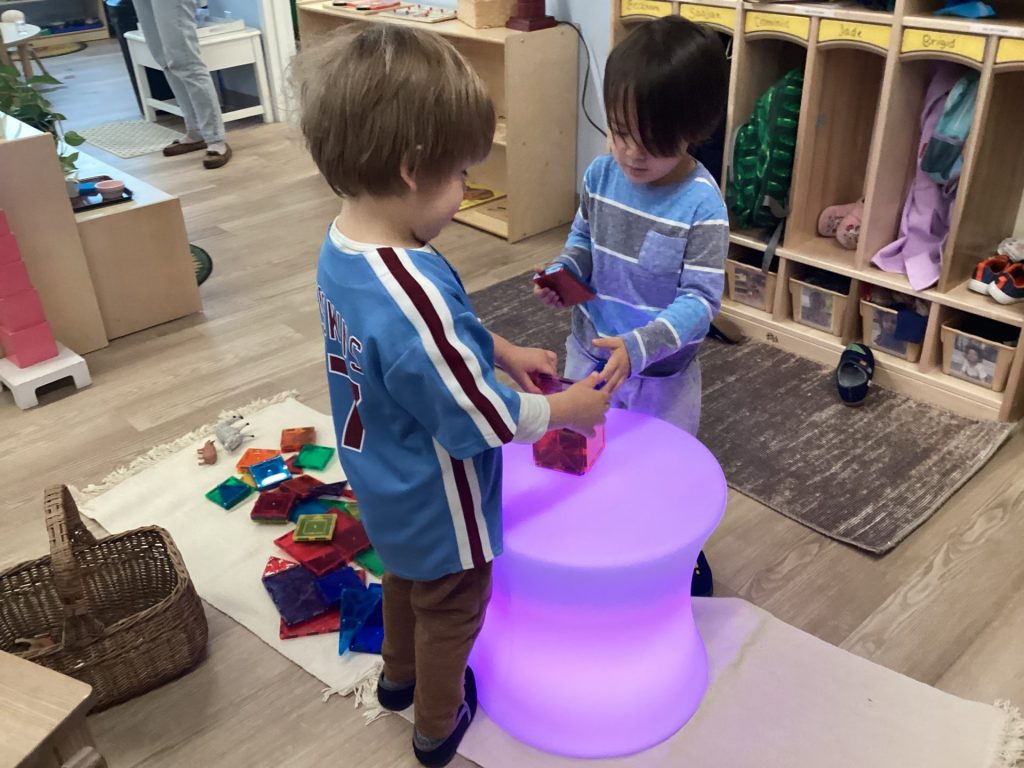

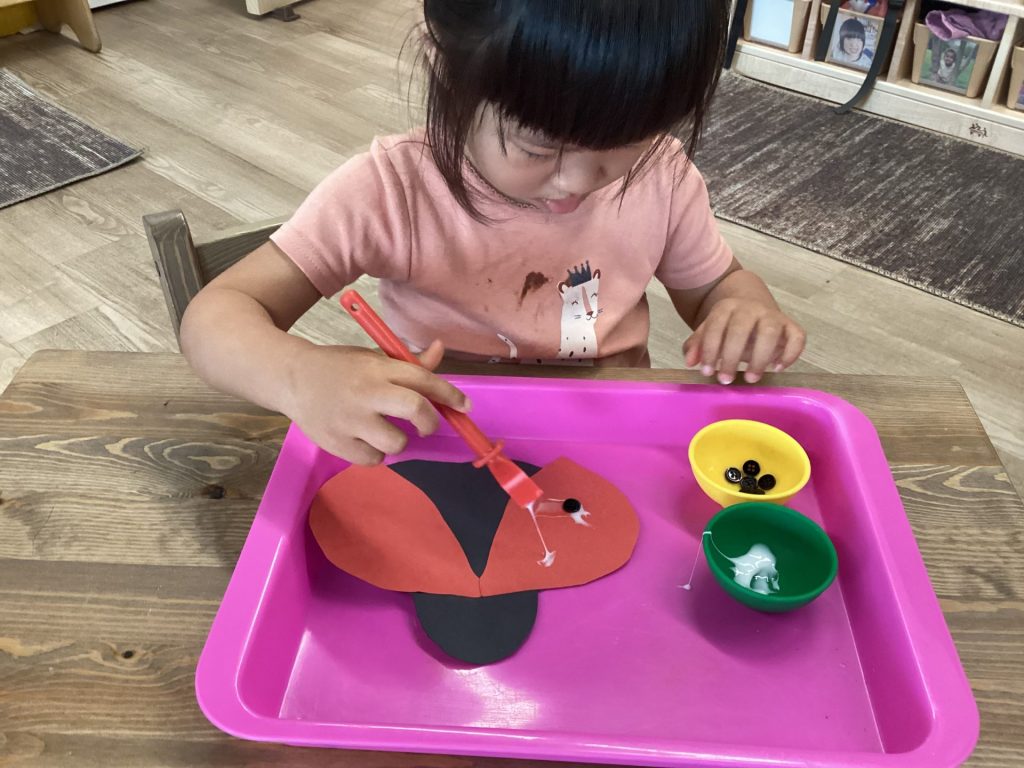
Movement also plays a role in the development of concentration and self-control.
There are also additional opportunities for gross motor activities outside of gross motor Circles. Children may engage in:
- yoga
- stretching
- jumping on the purple gel square
- dancing
Movement At Recess
Recess is an extension of the prepared environment. The children have the freedom to choose which activity they partake in, whether climbing, running, building with Lego blocks, kicking a ball, or reading a book. Movement activities or songs are sung, and directional cues within songs encourage children to squat, crawl, walk on toes or heels, jump, stand still, or run. Our indoor space is advancing in functionality as we have recently added new climbing equipment, which has been challenging the children’s capabilities, and it is perfect timing as the children are motivated to climb!
Check out the variety of ways the children can climb during their Recess:
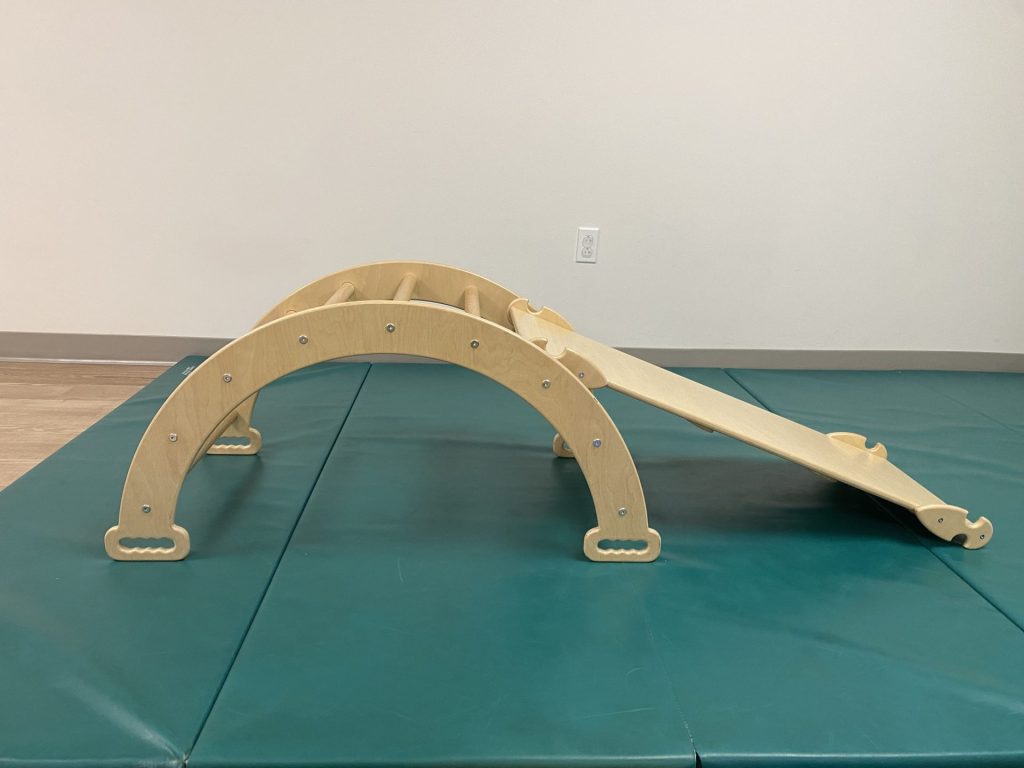
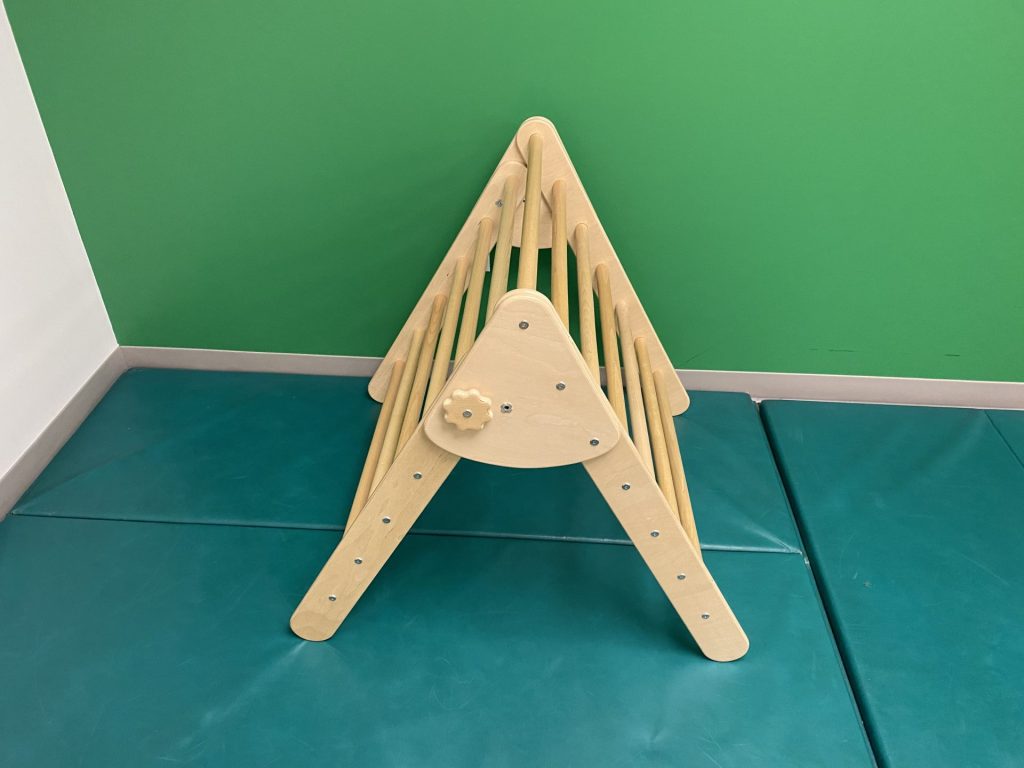
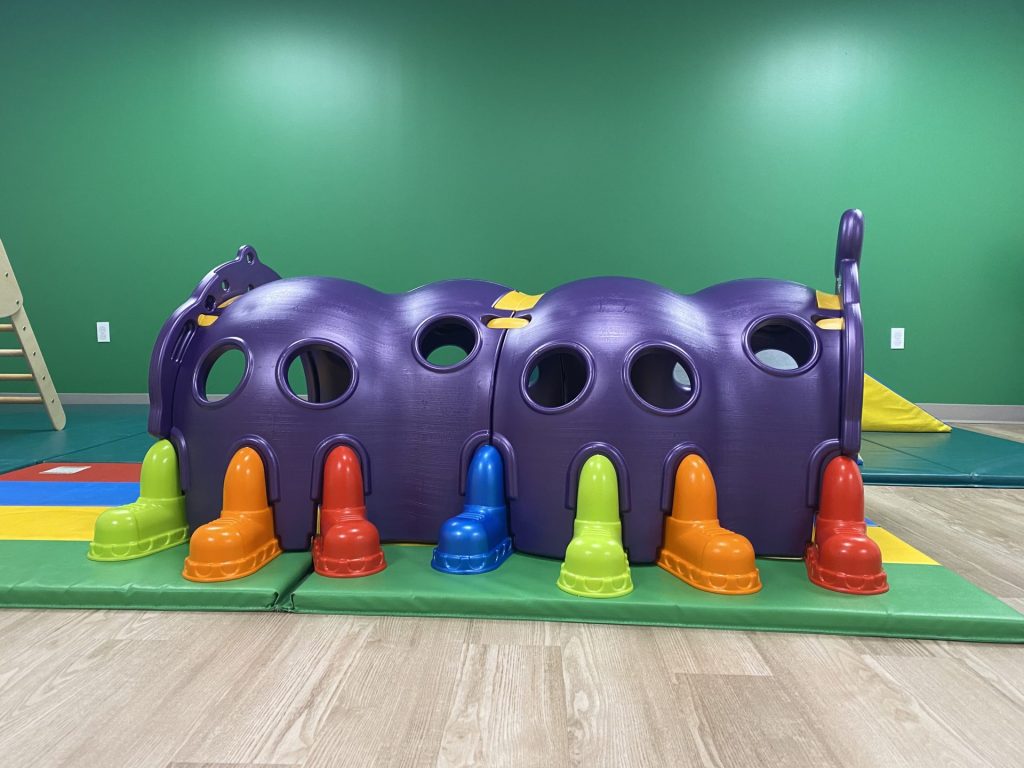
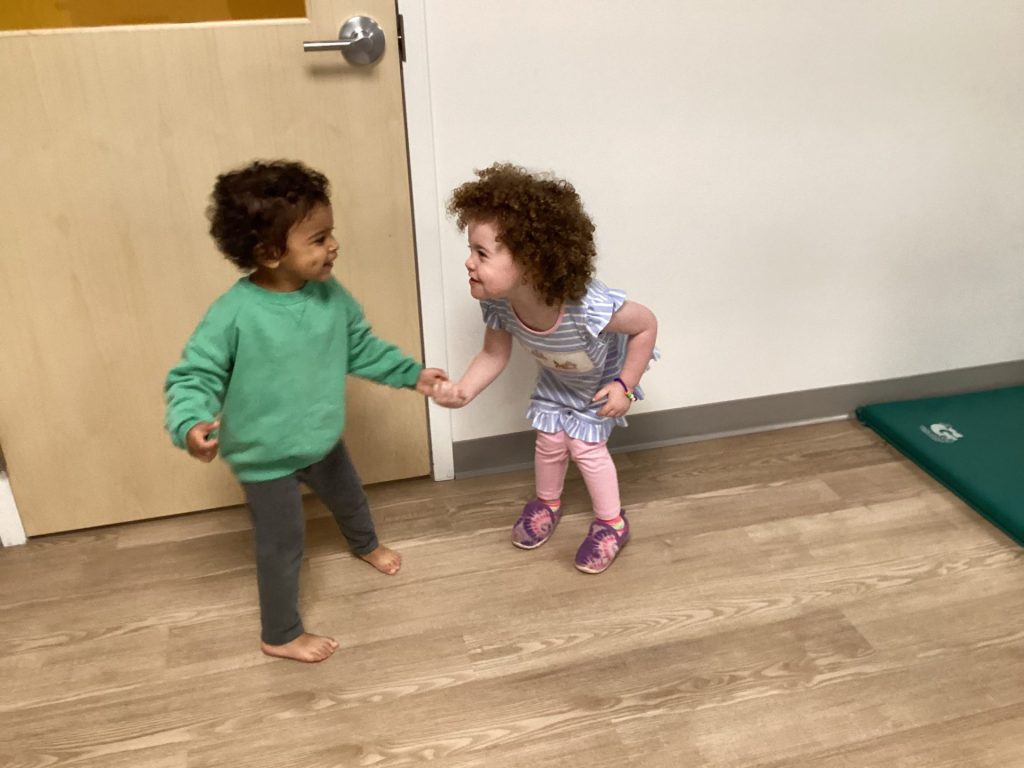
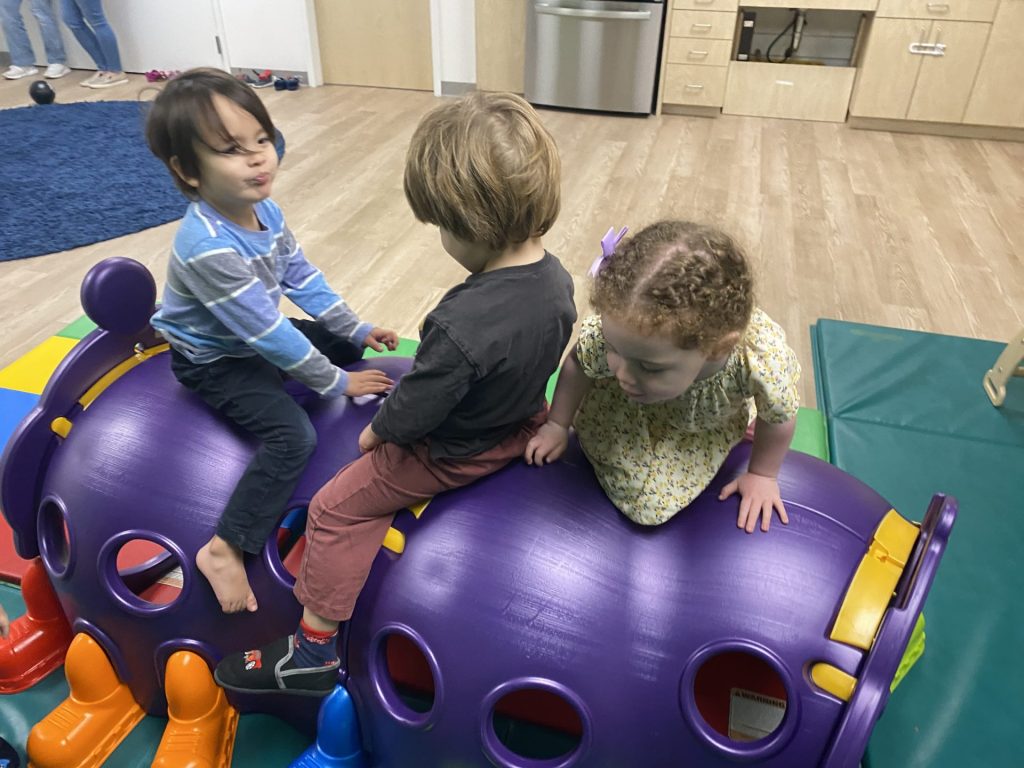
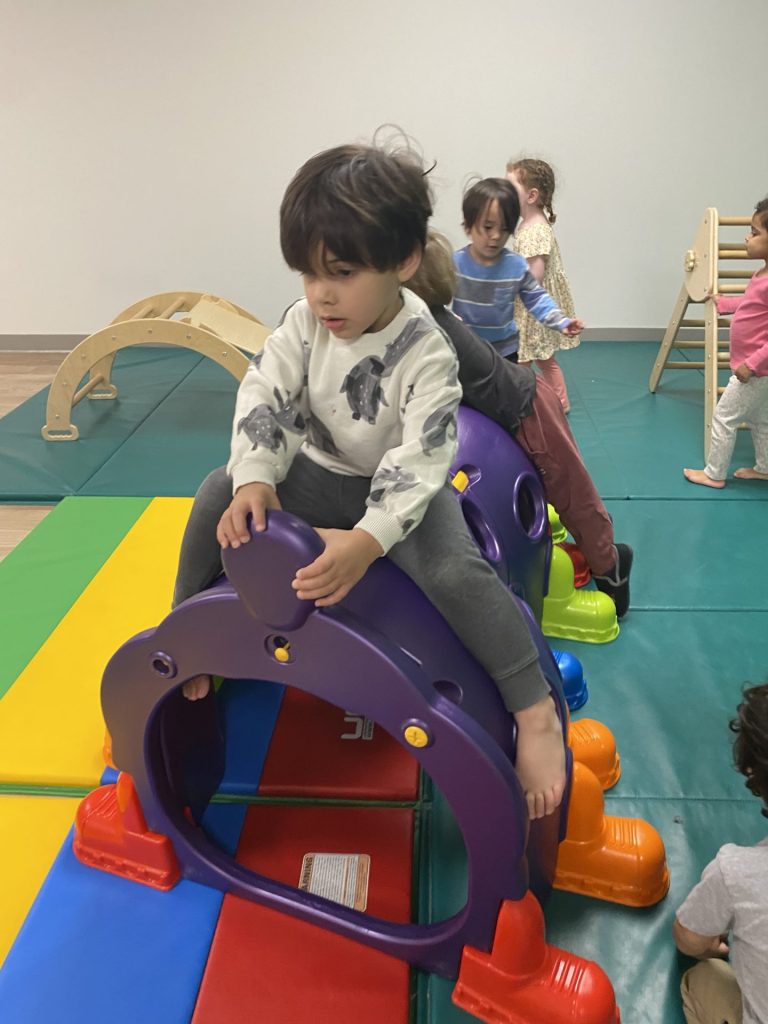
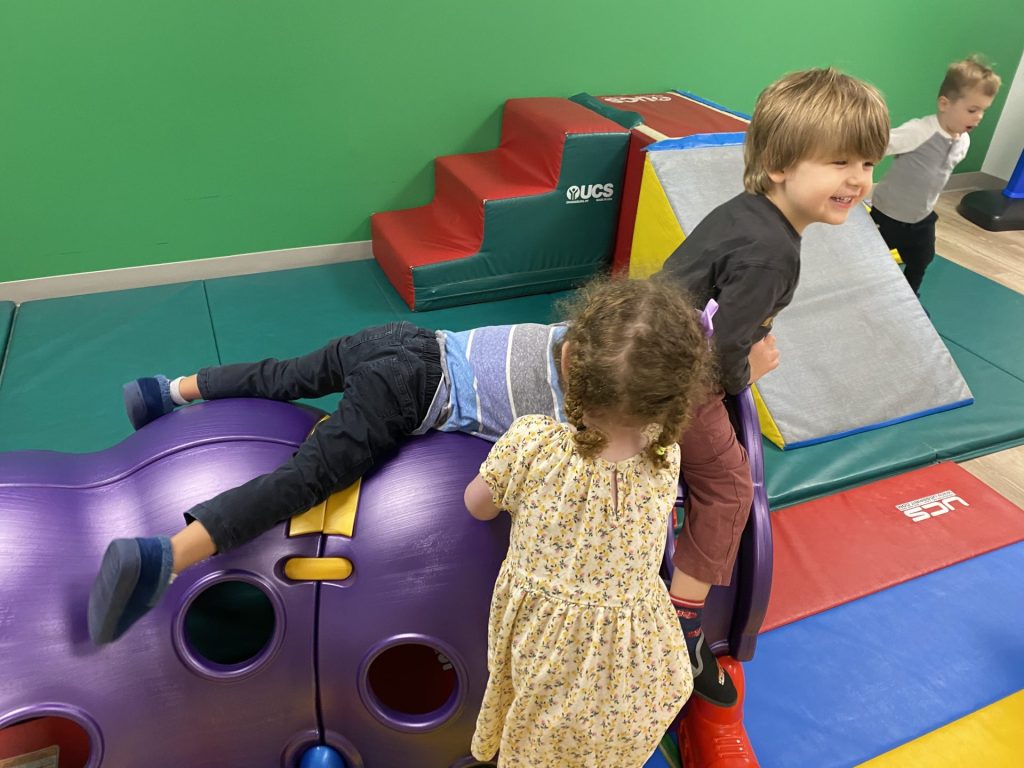
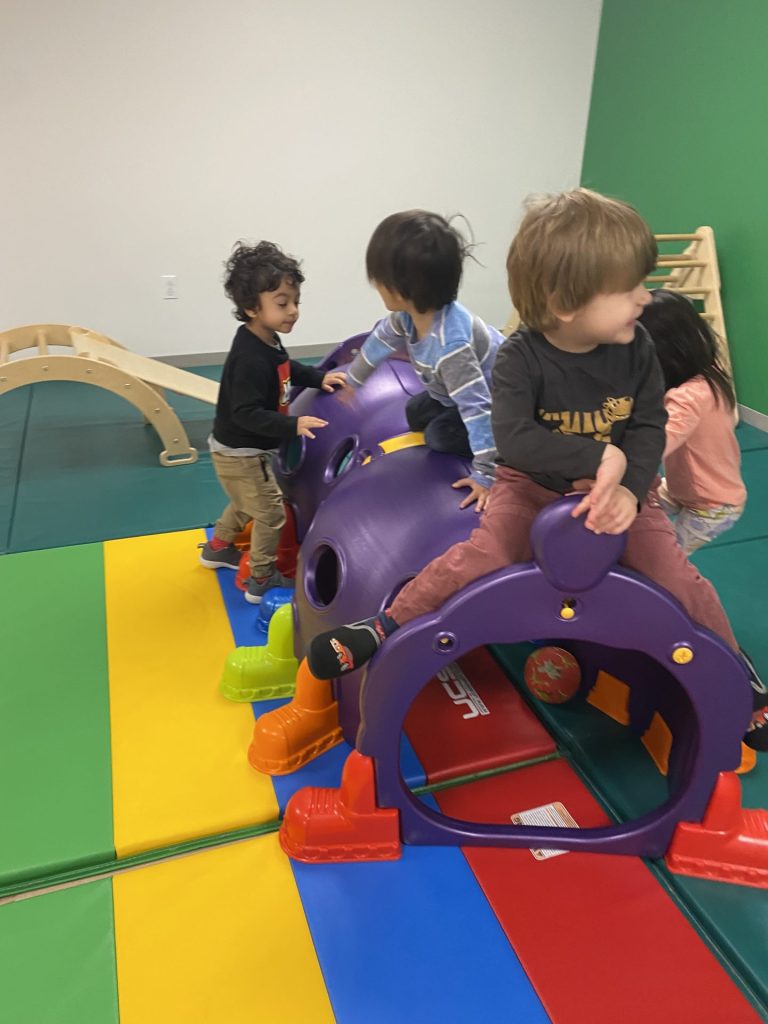
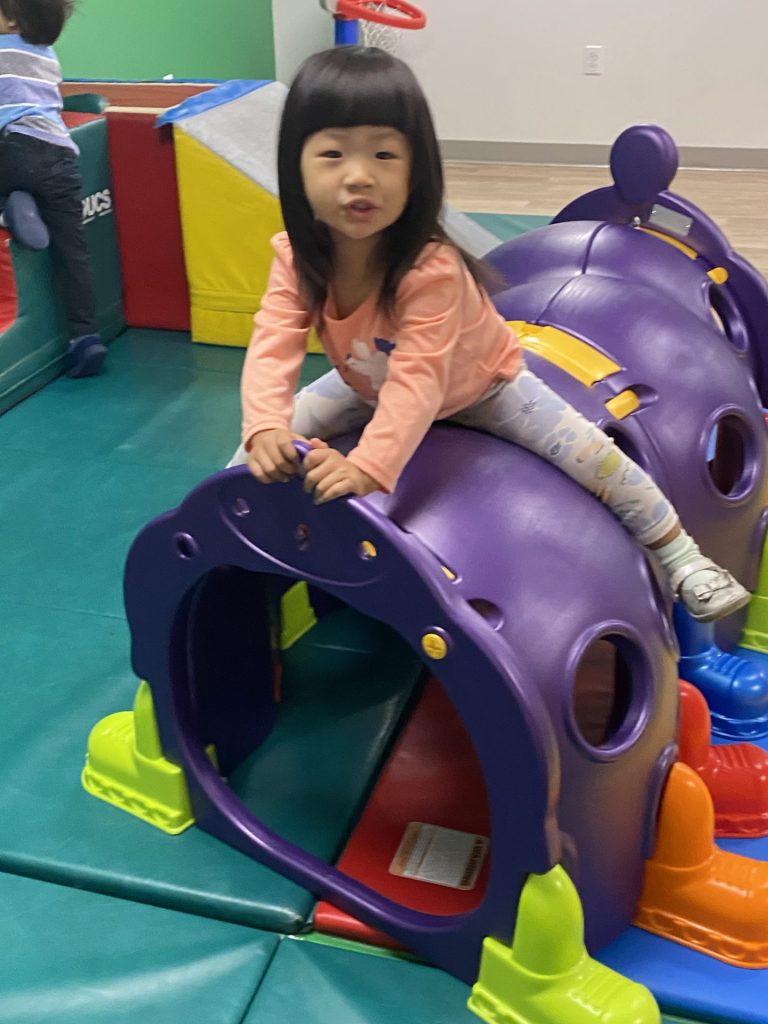
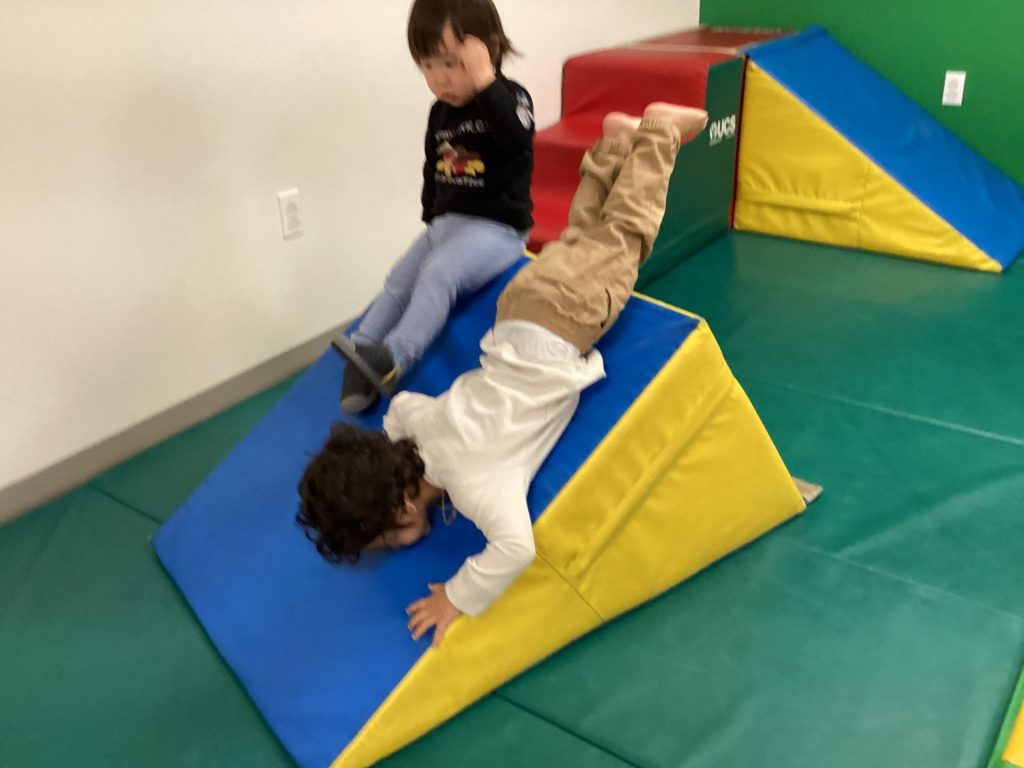
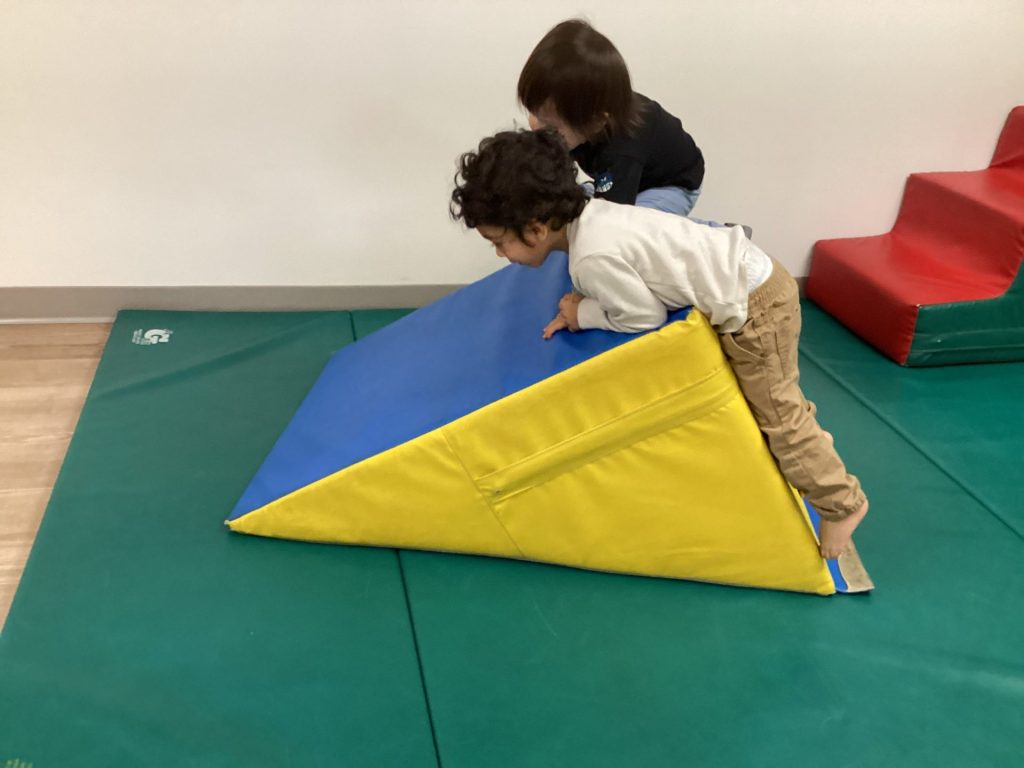
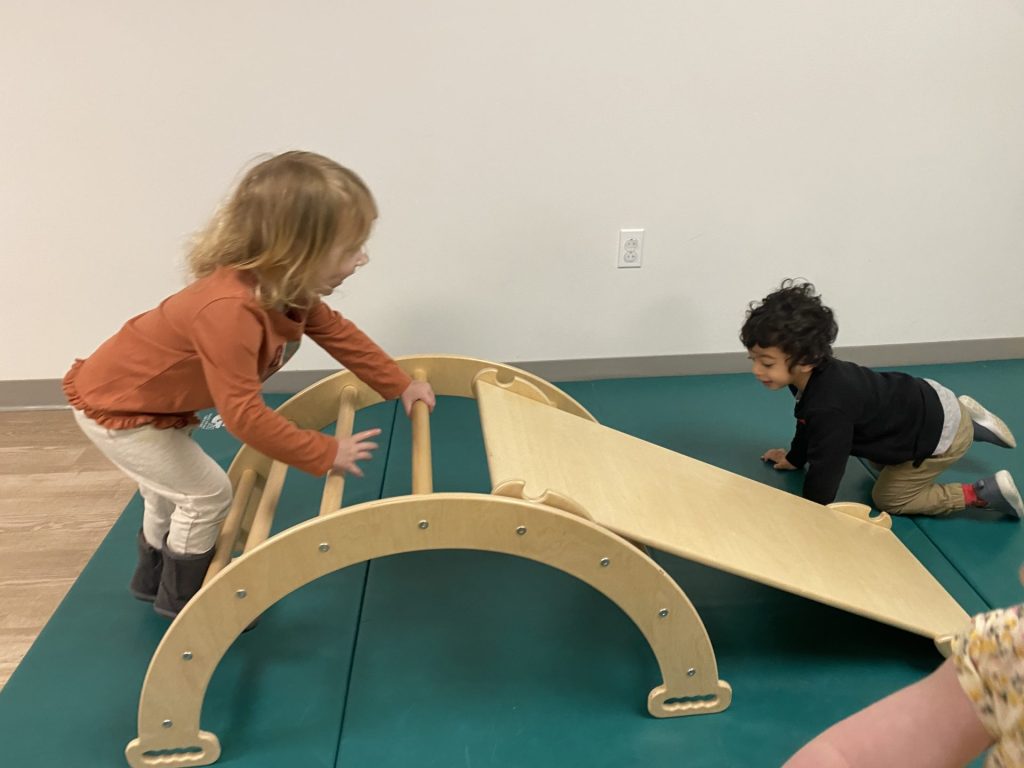
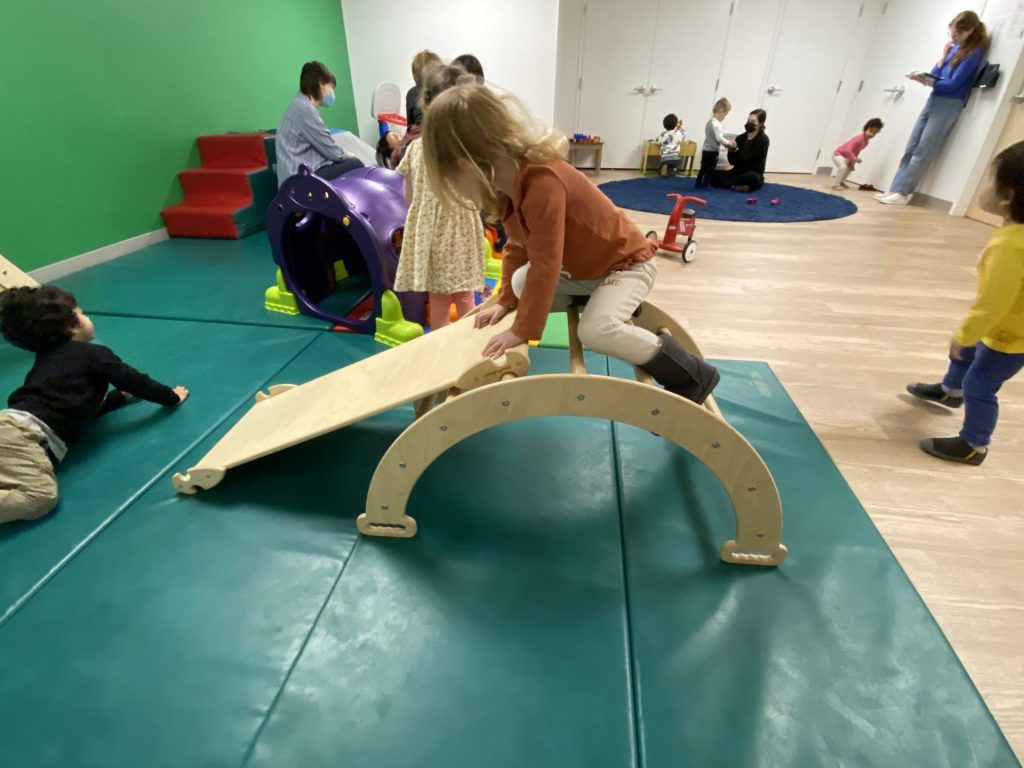
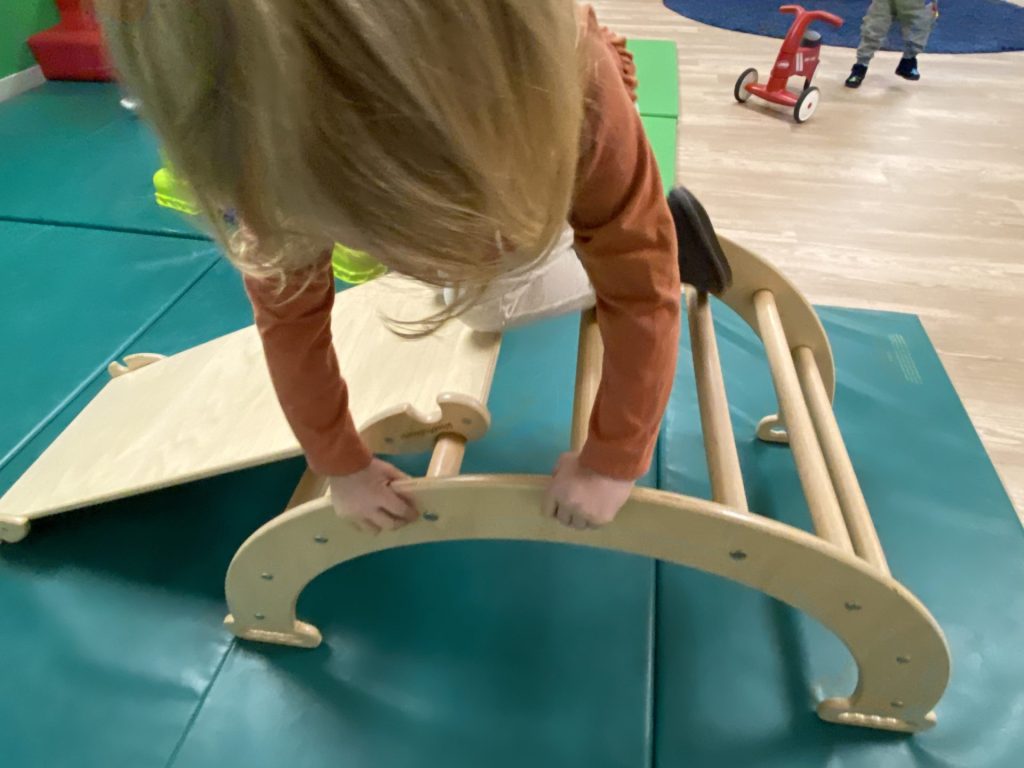
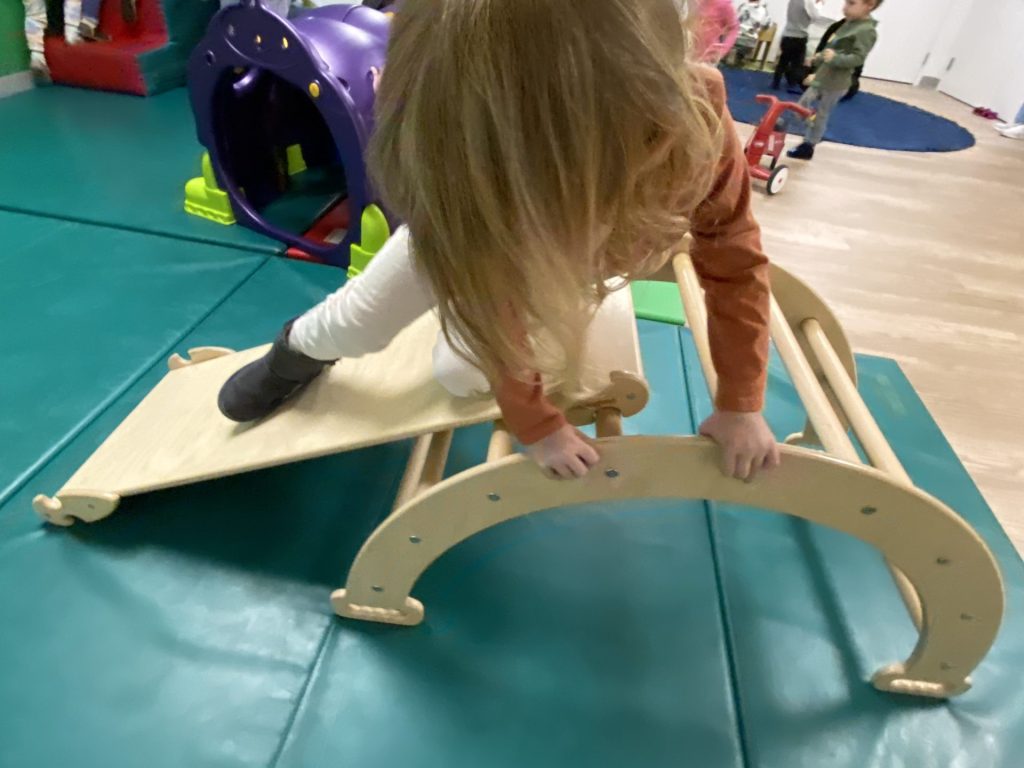

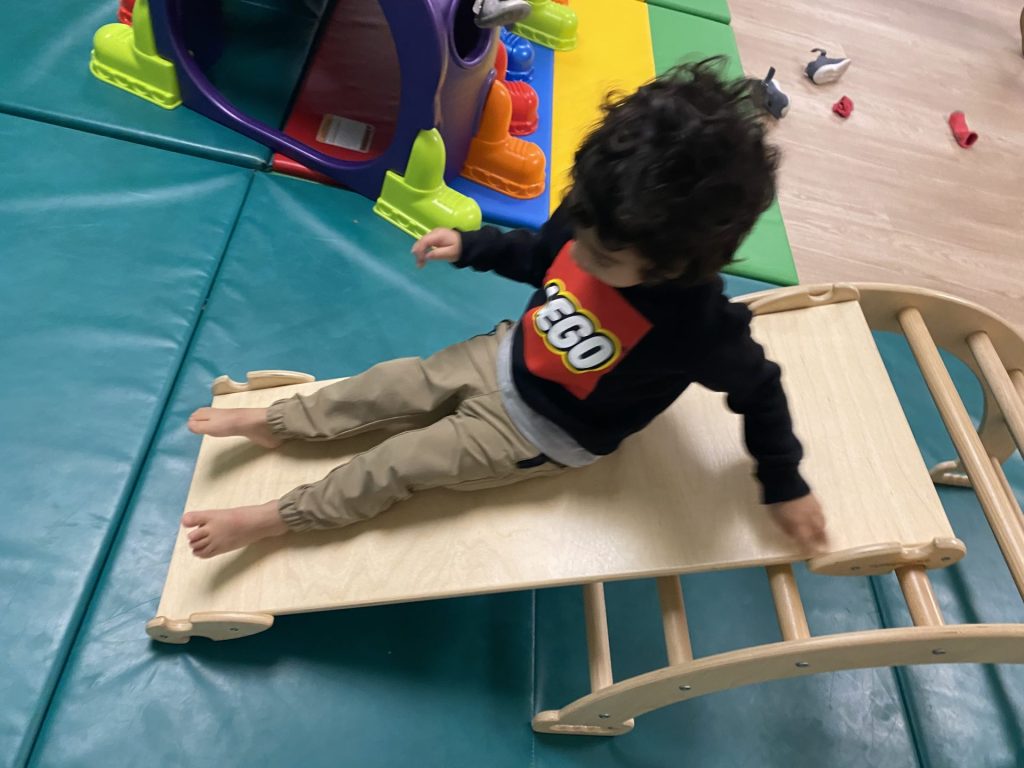
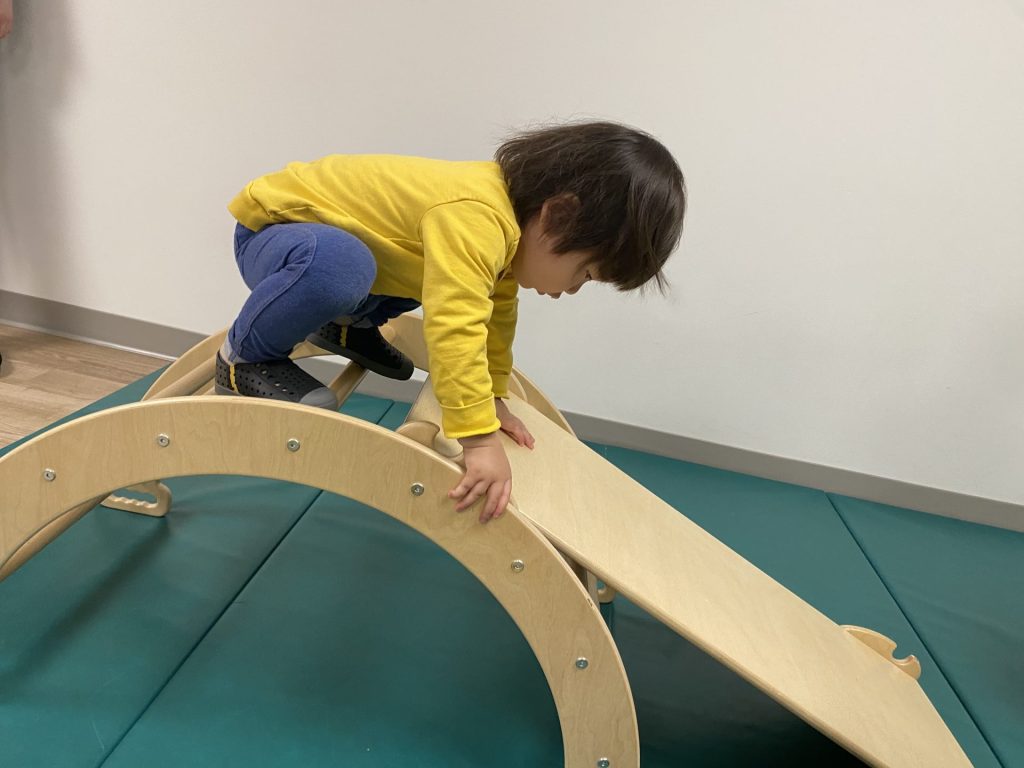
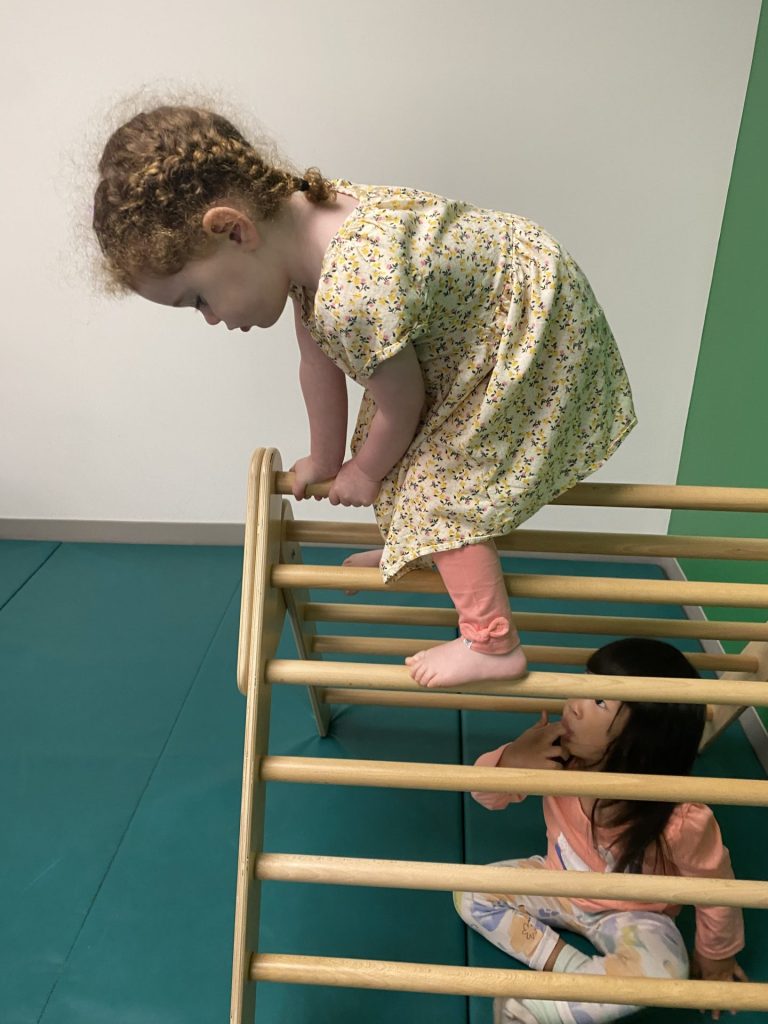
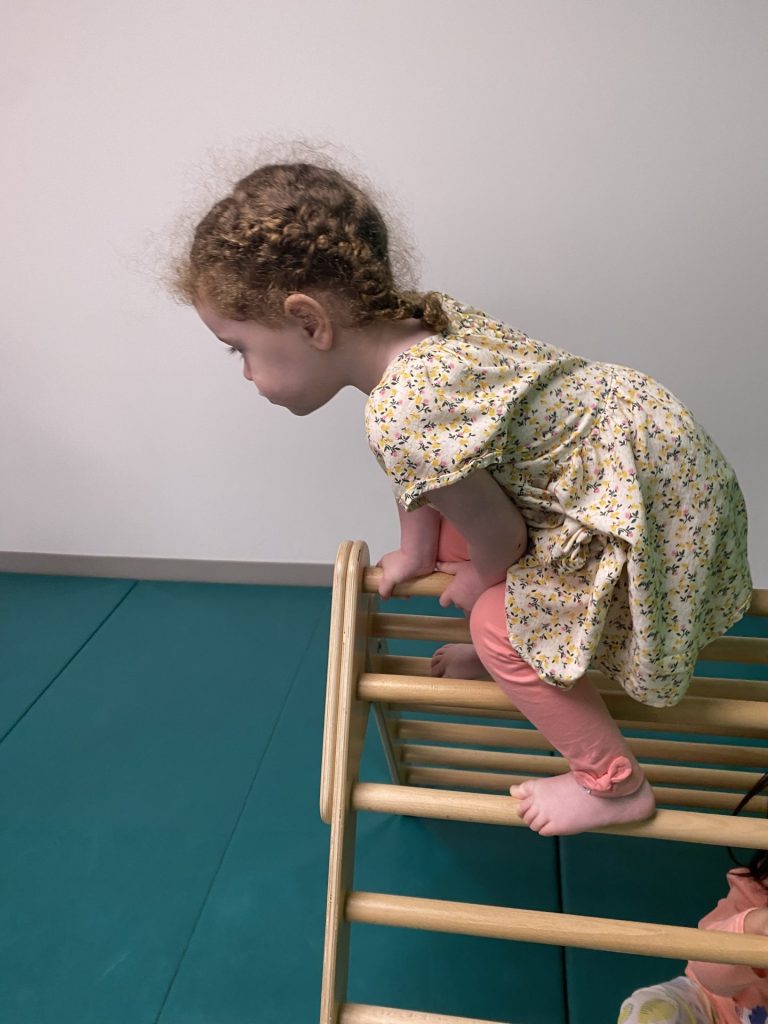
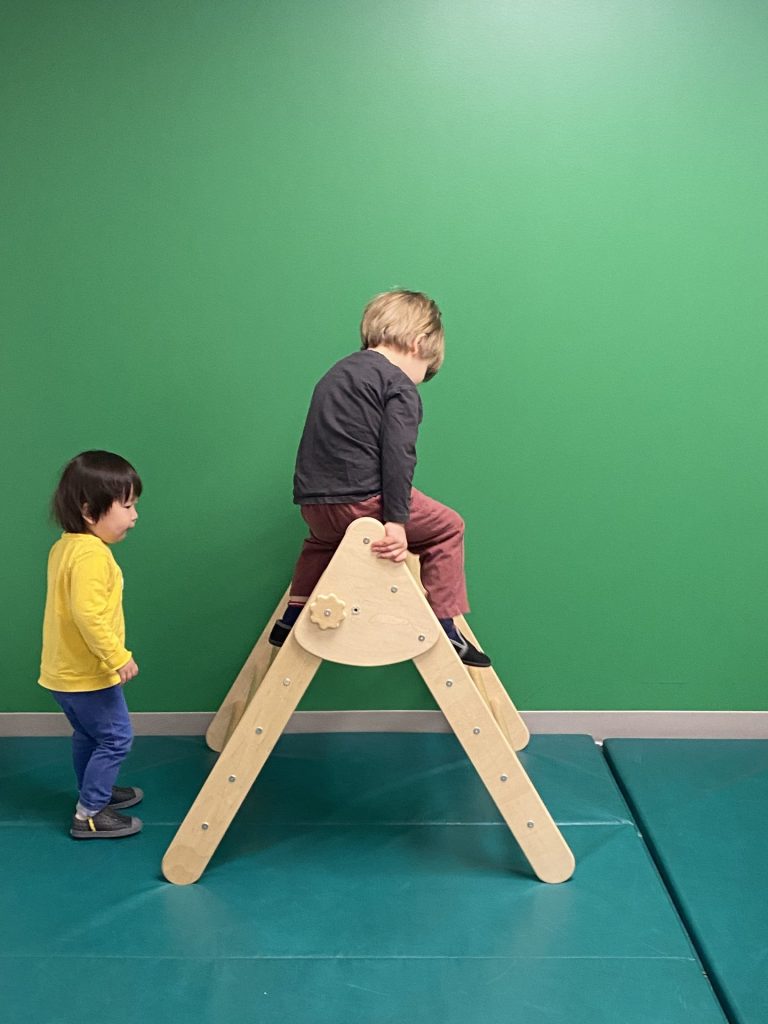
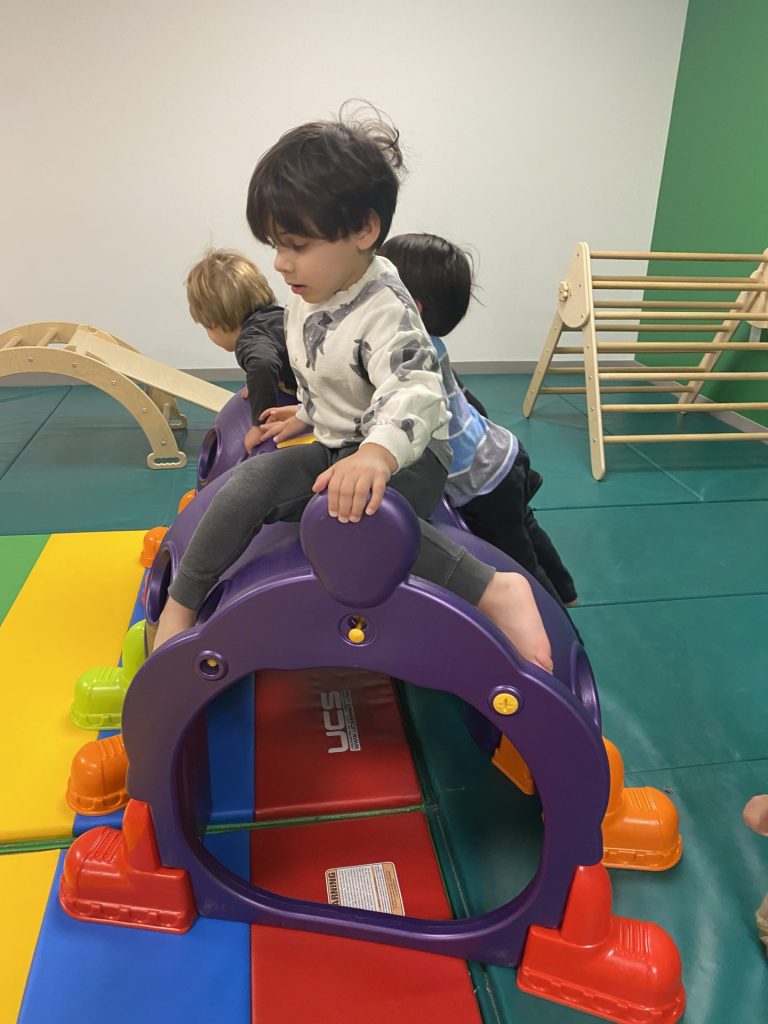
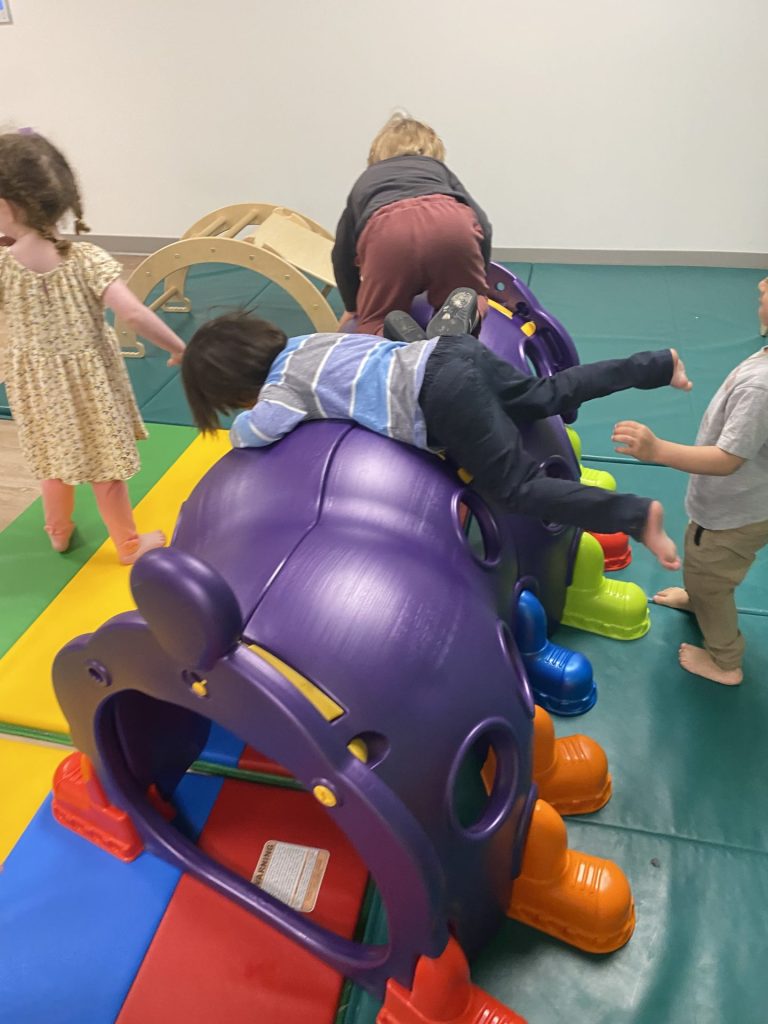
The two climbing structures became one, using the slide as a bridge to connect the two together. It was exciting for them to try.
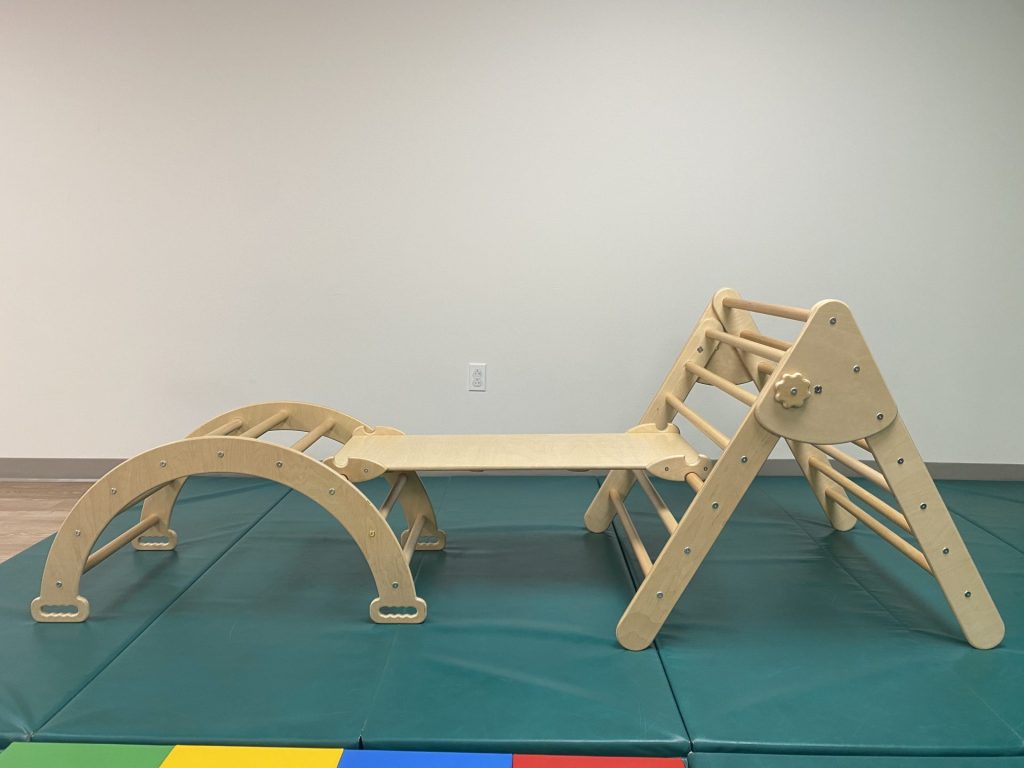
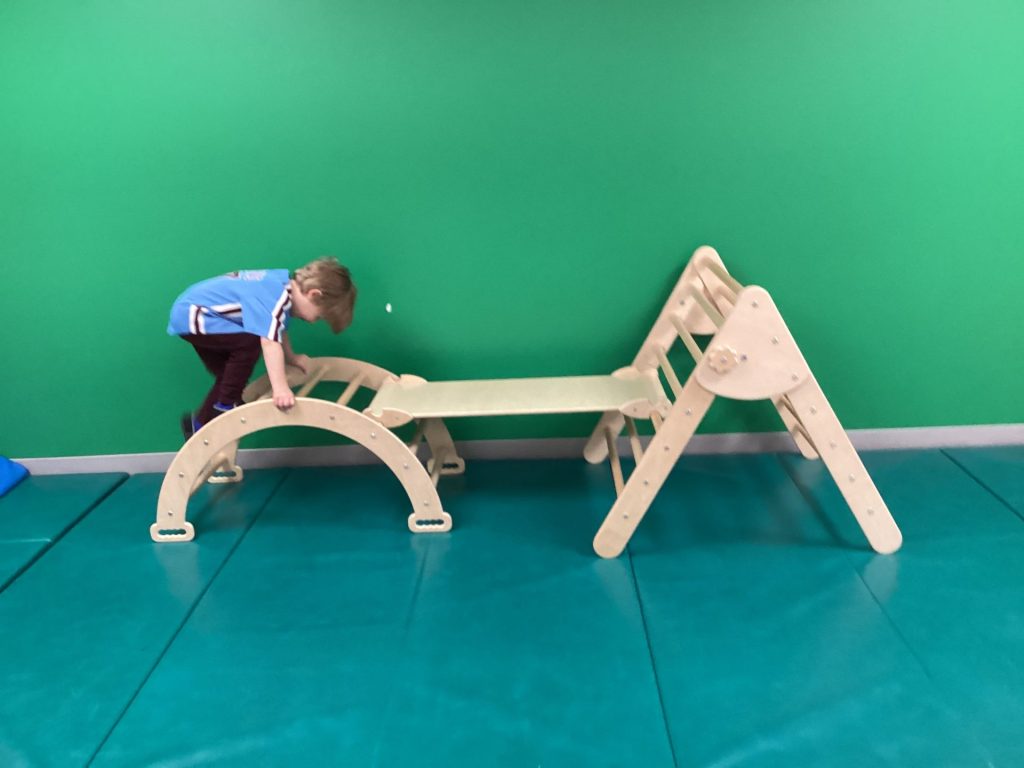
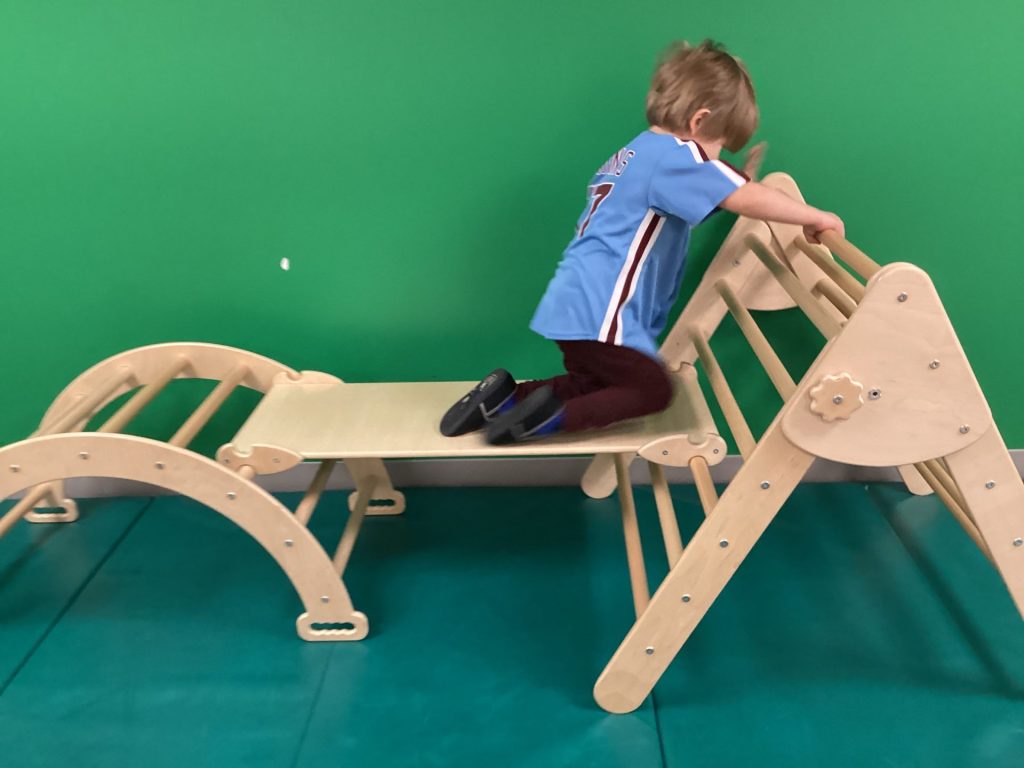
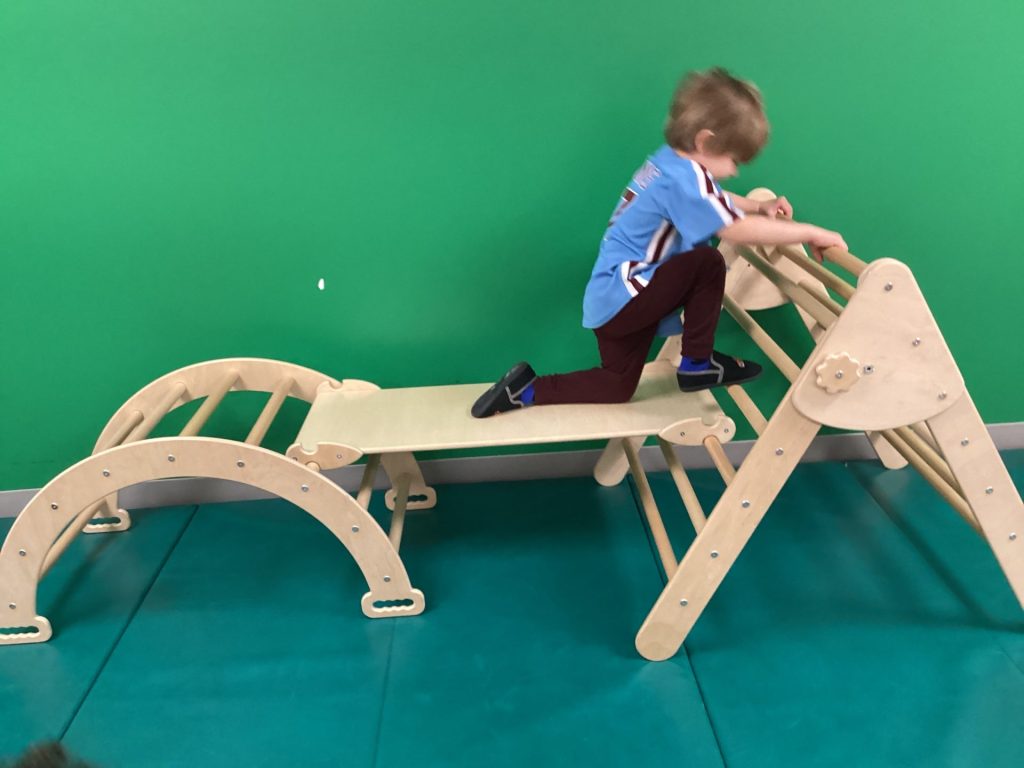
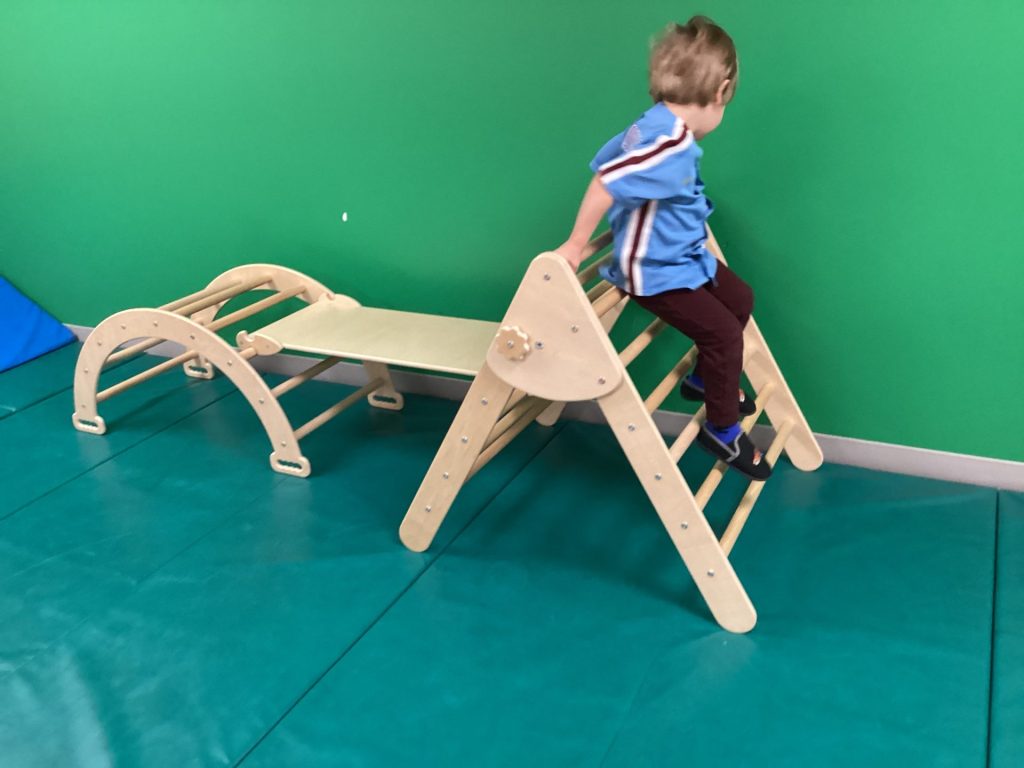

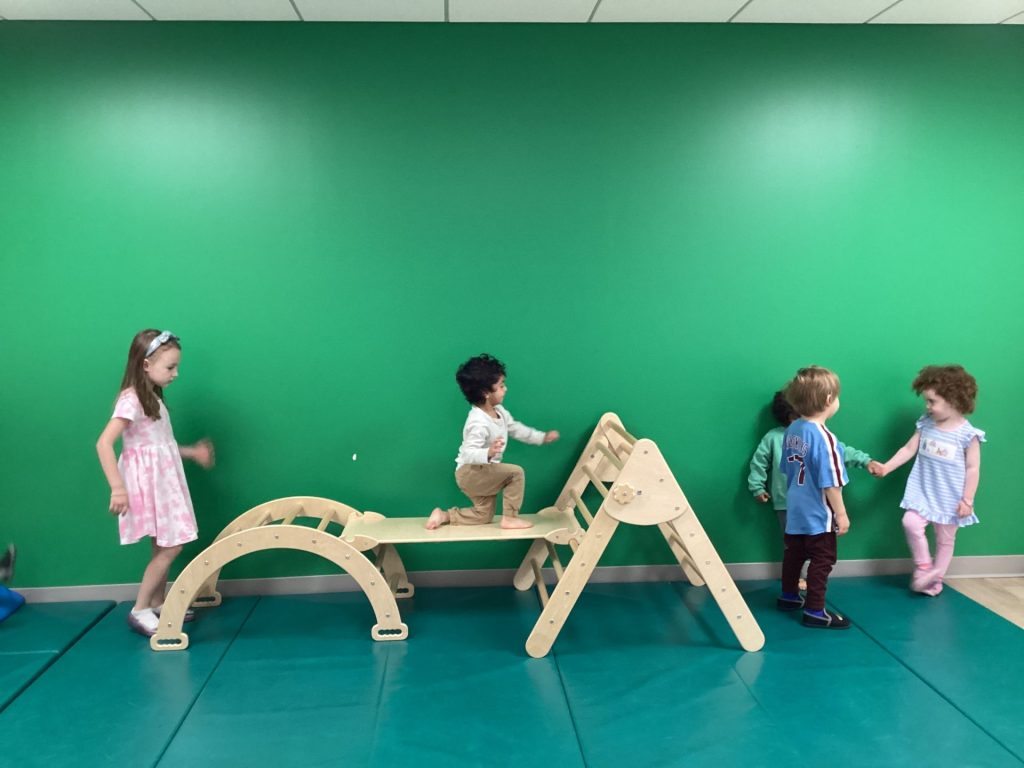
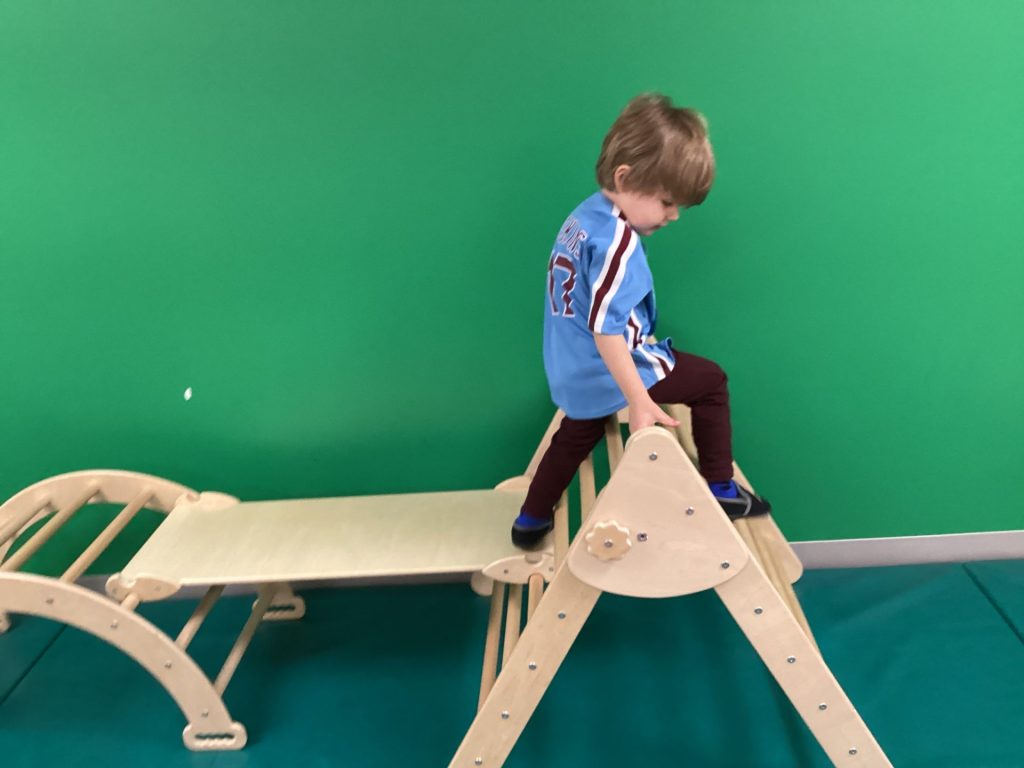



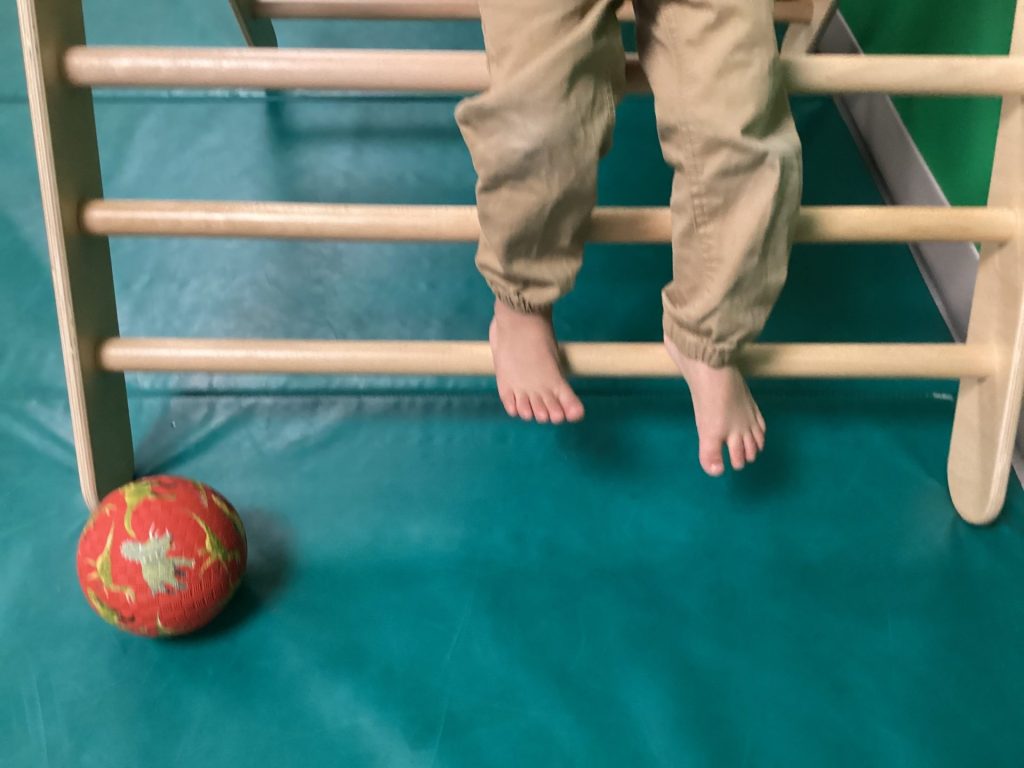
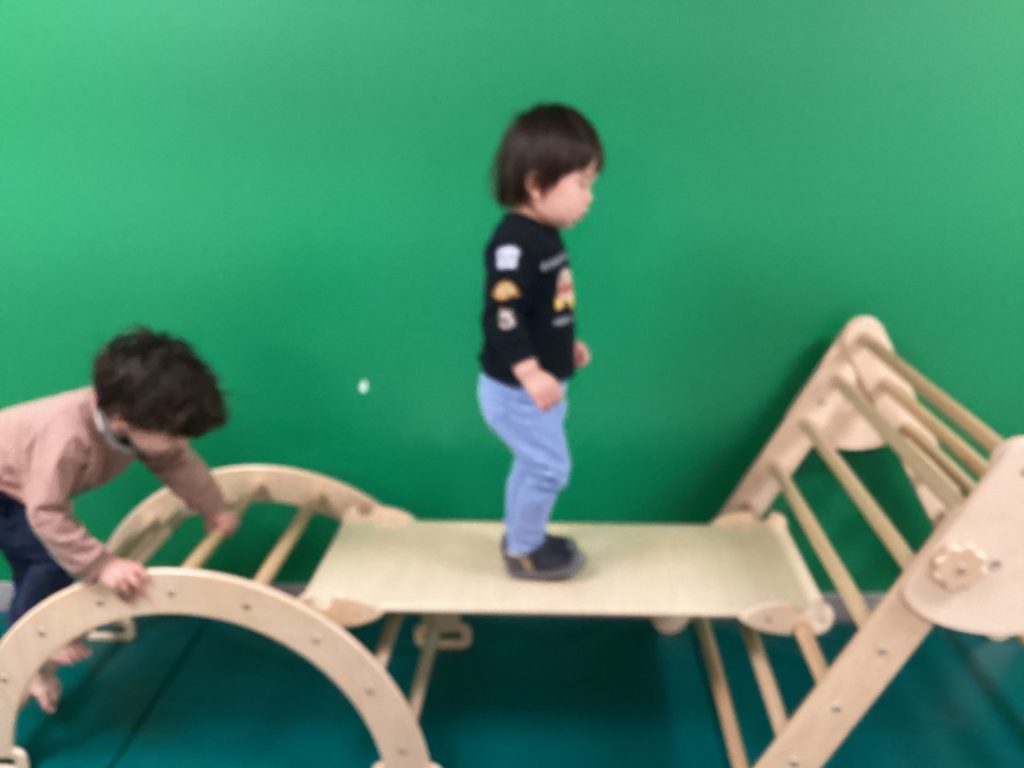
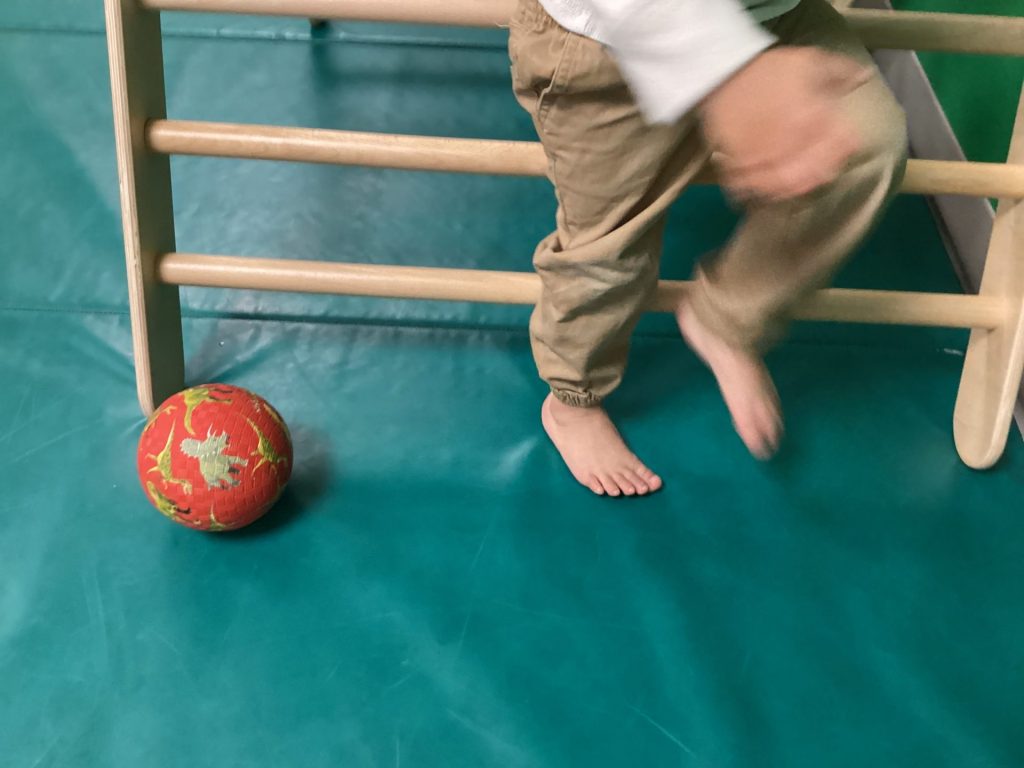
Thank you so much for all the Teacher Appreciation messages and treats!! Sara, Marissa, and I feel so privileged to work with your children, and so grateful to have you as a part of our classroom family and school community.
See you at the Auction next week!!
Parent Education Video Rewind – Child Development Through Play: Toys, Sharing, Friendships and Risks
Read More